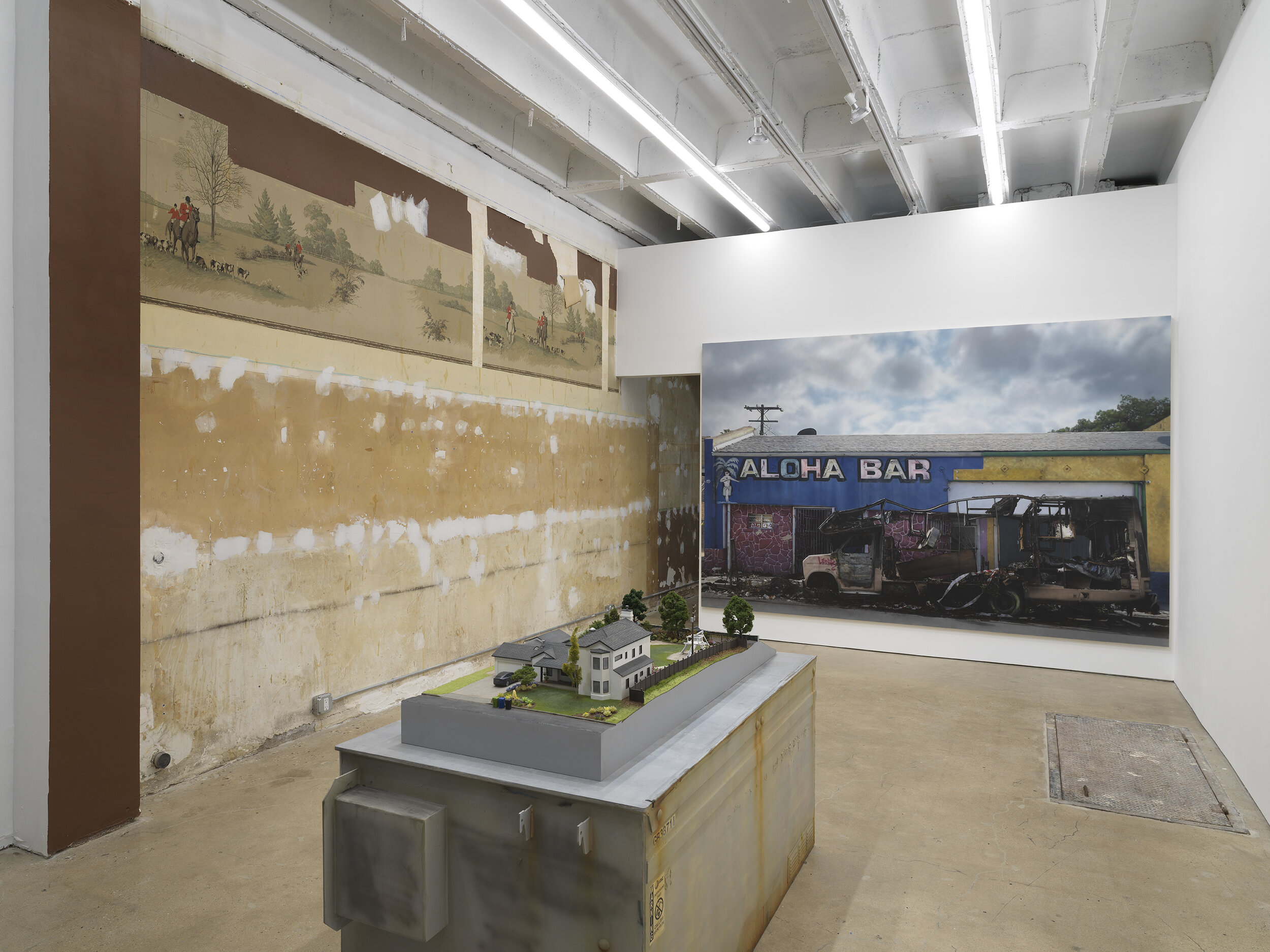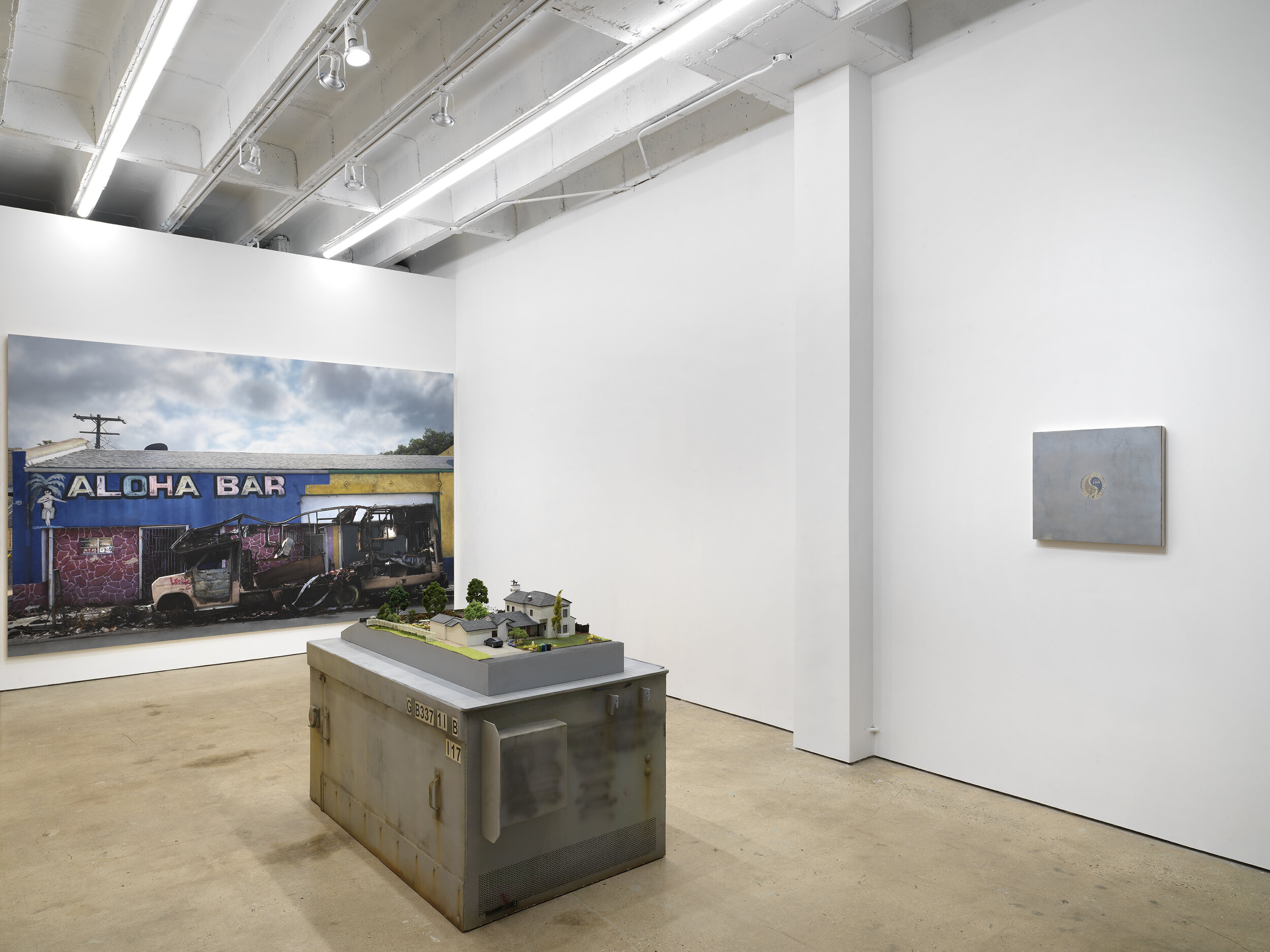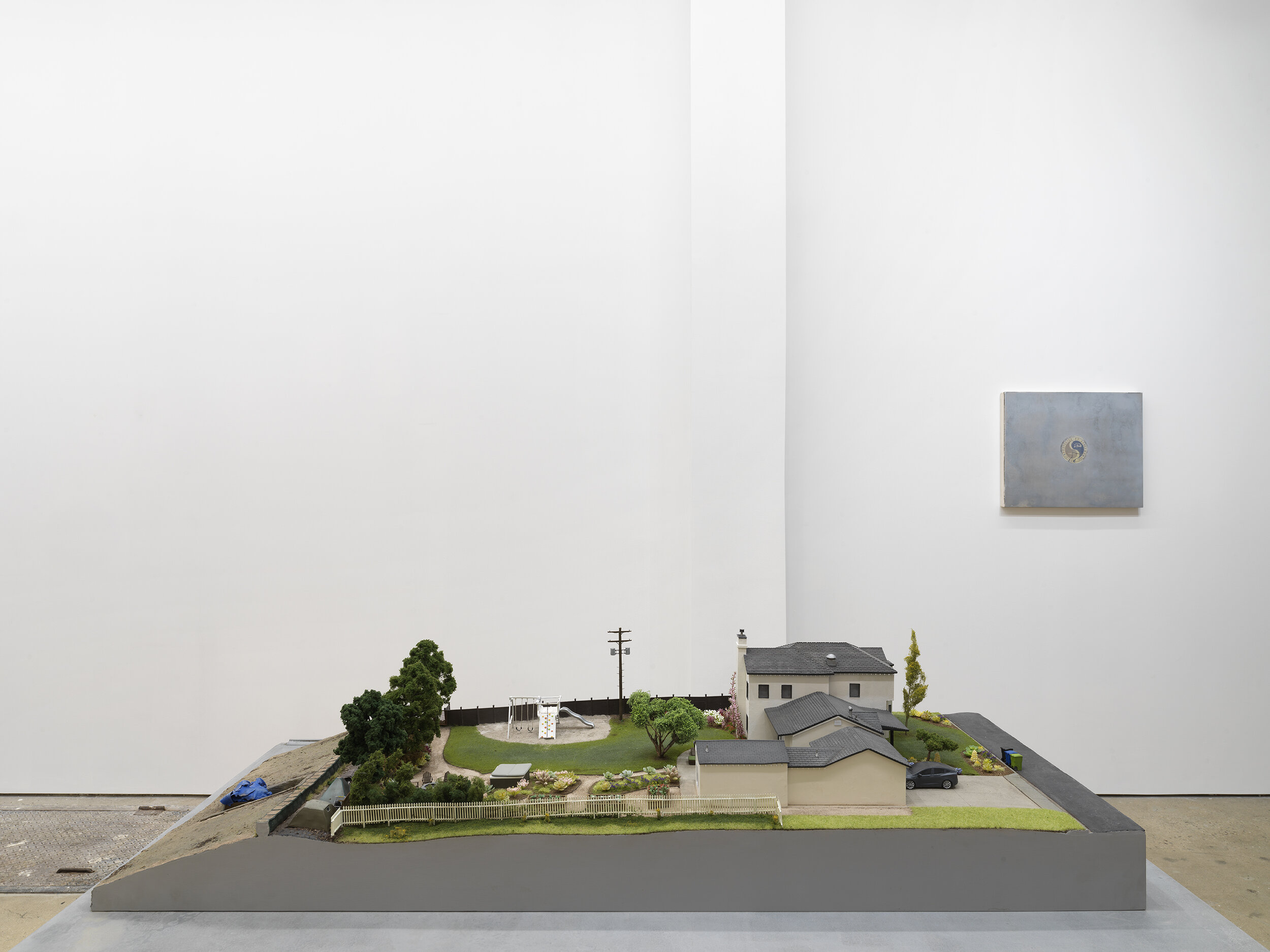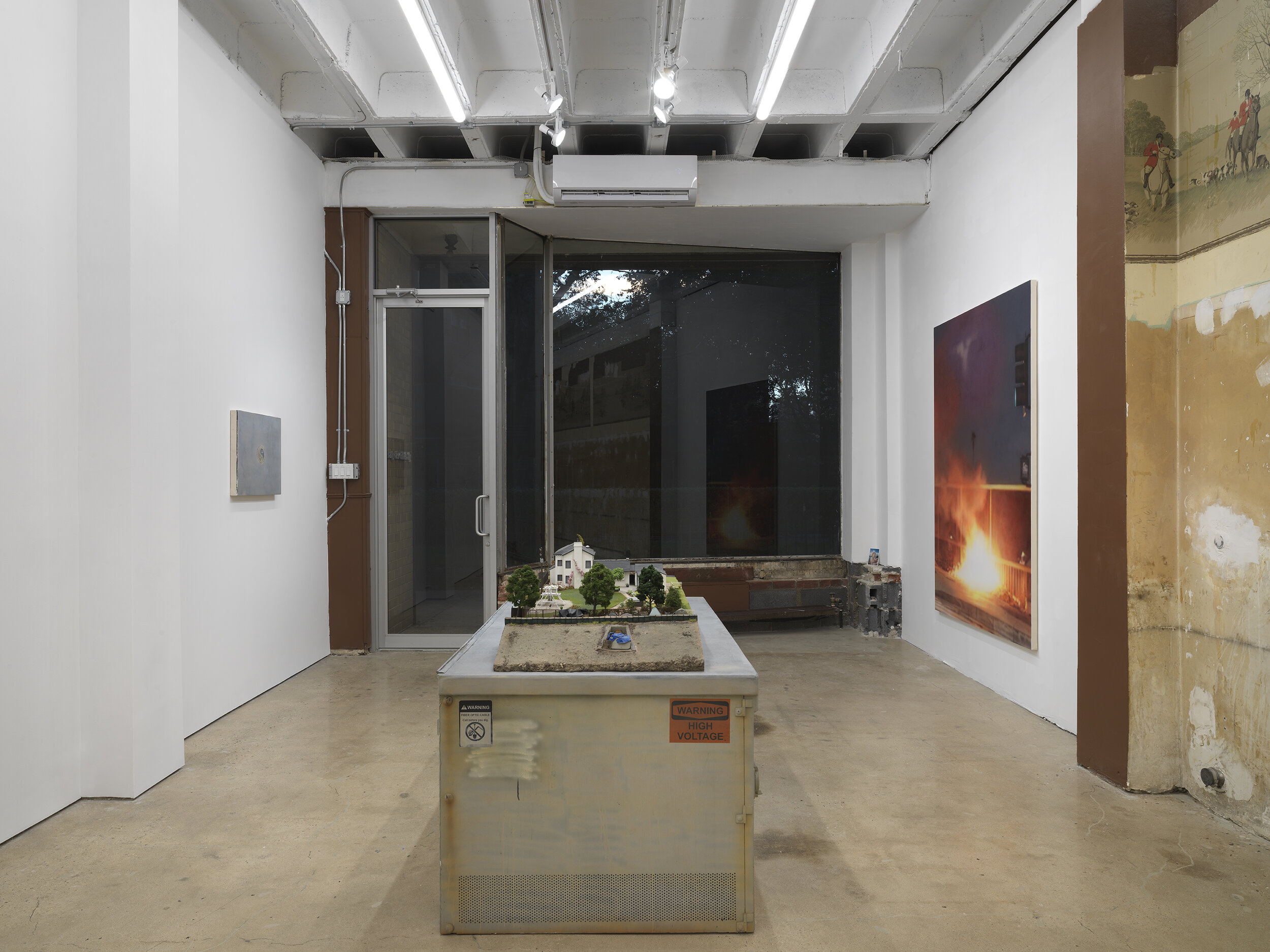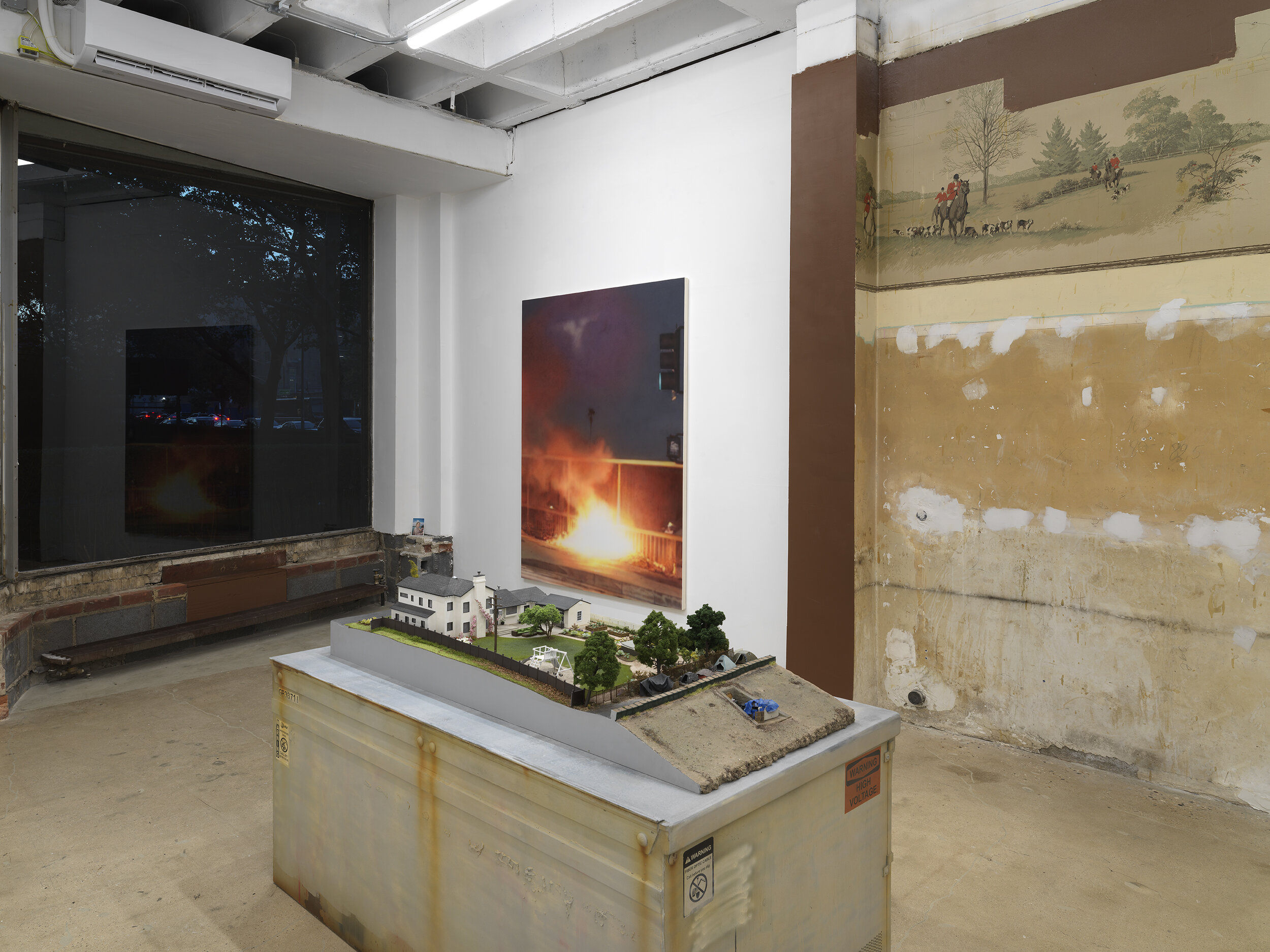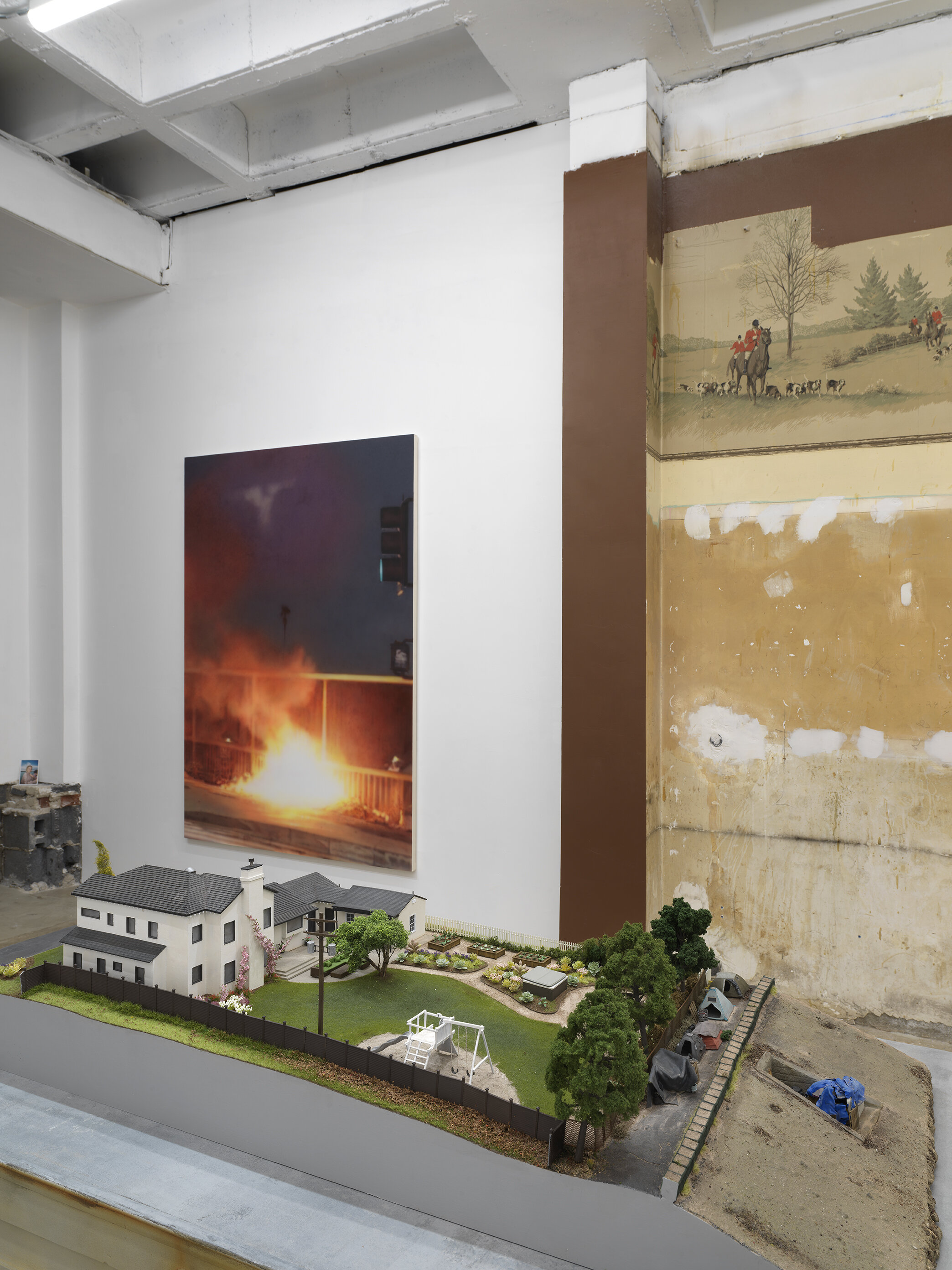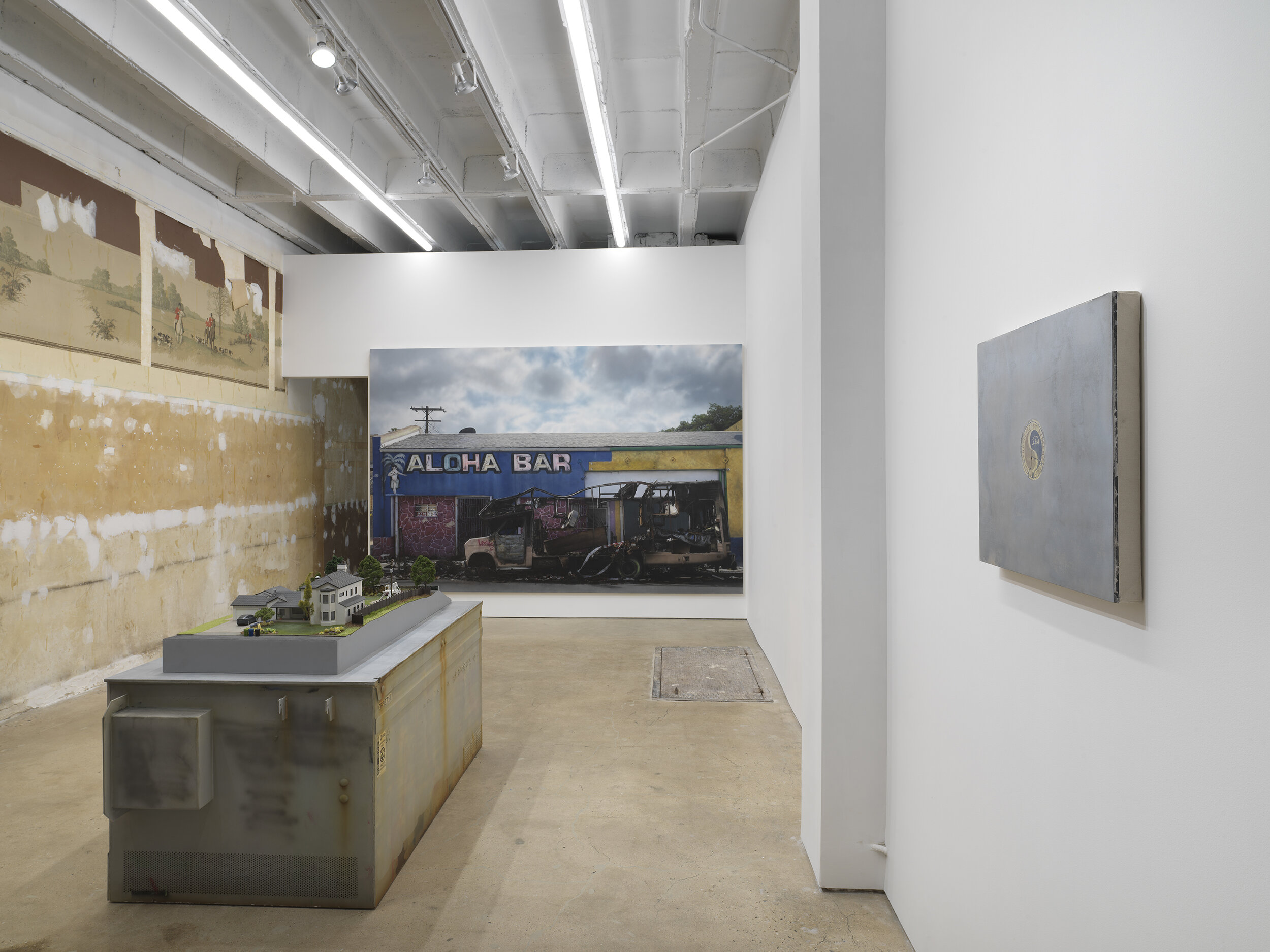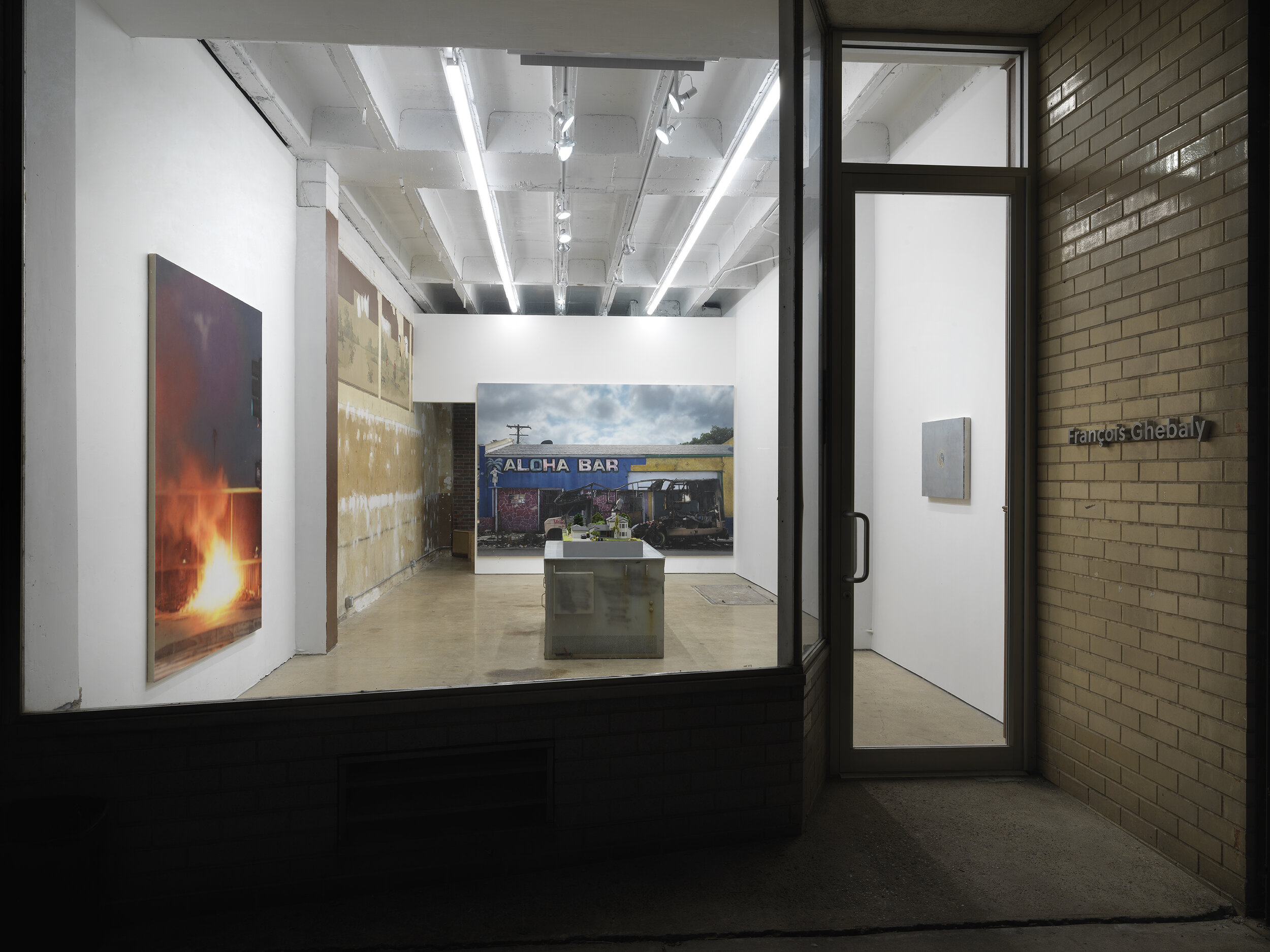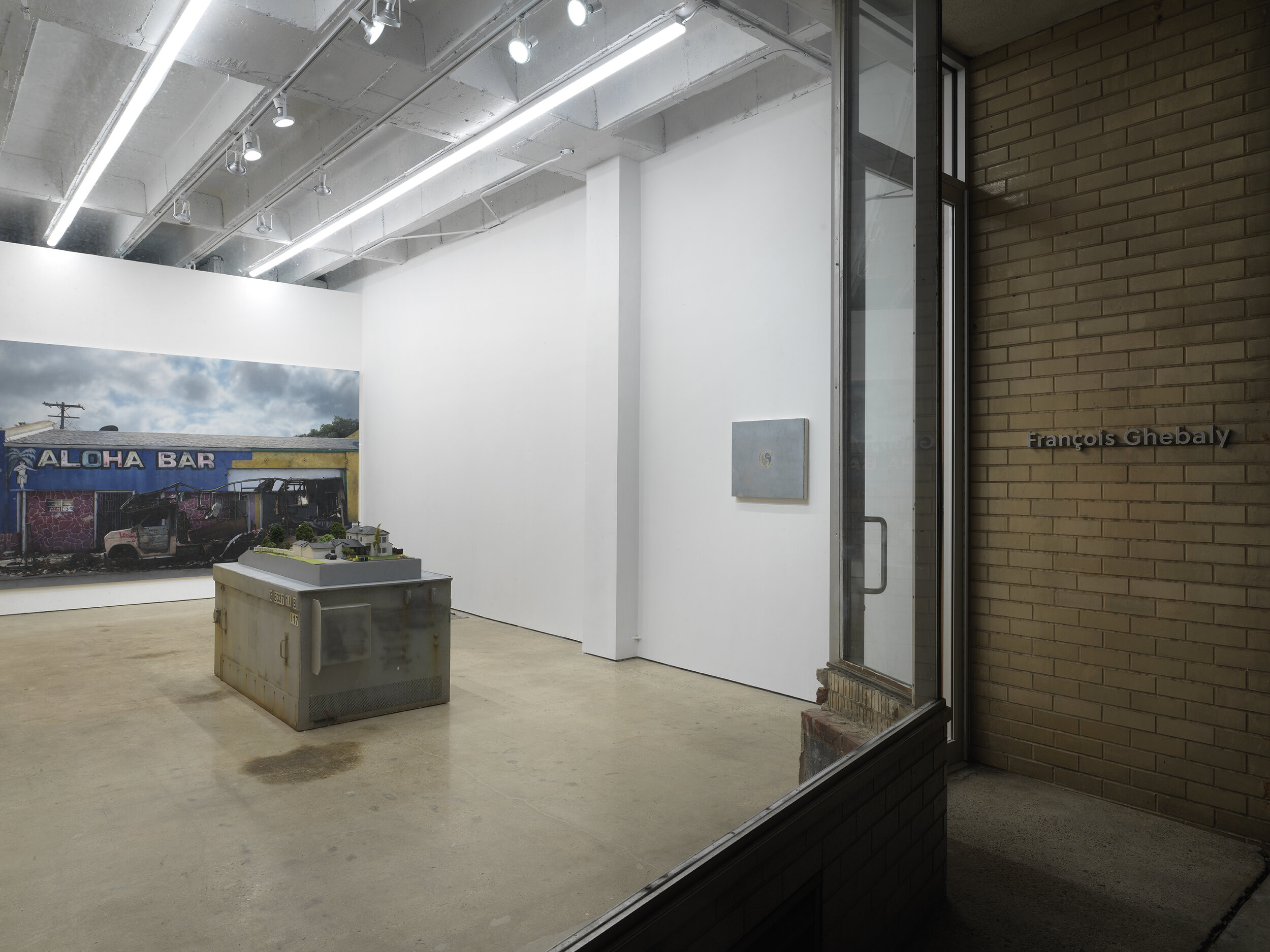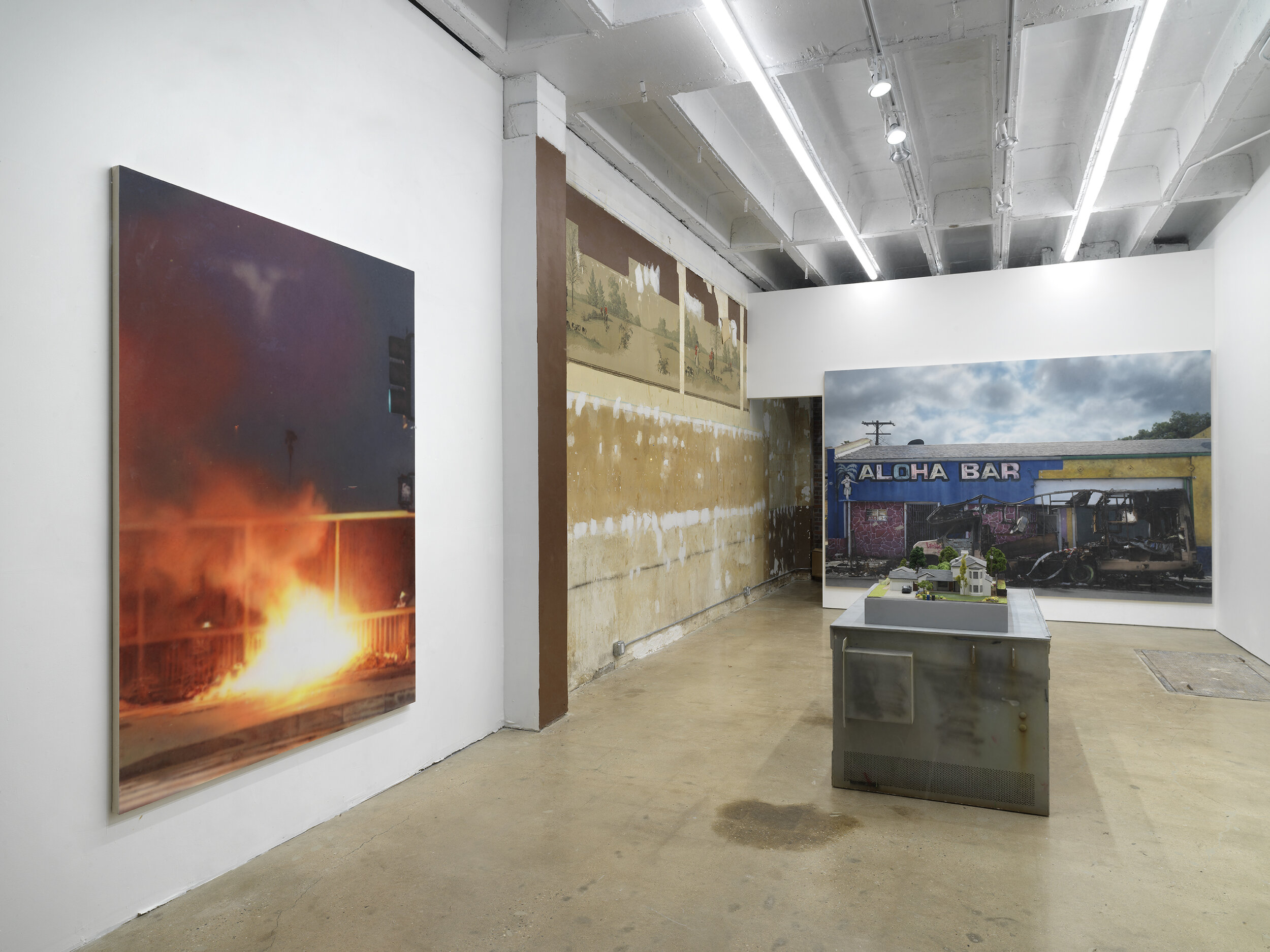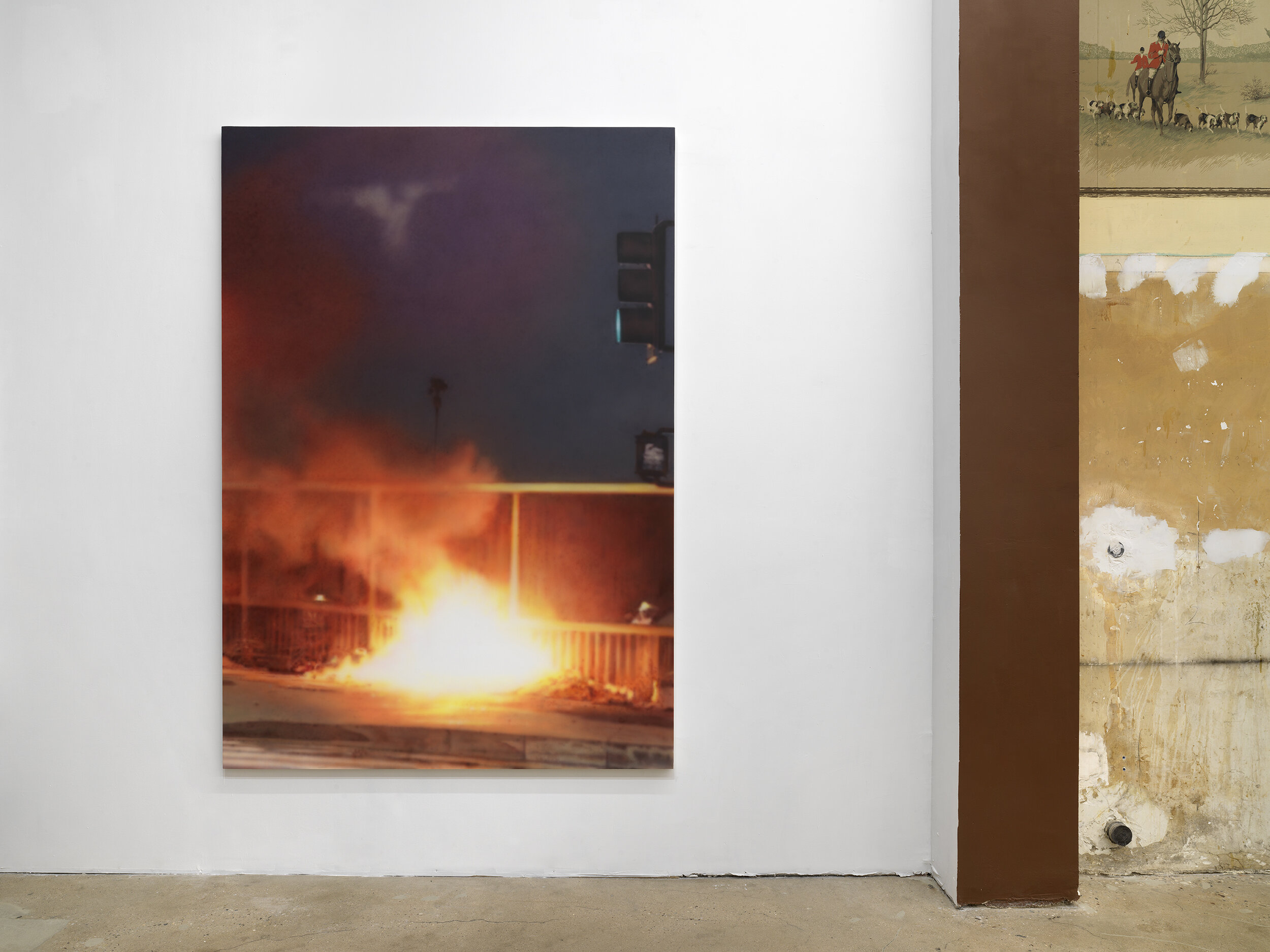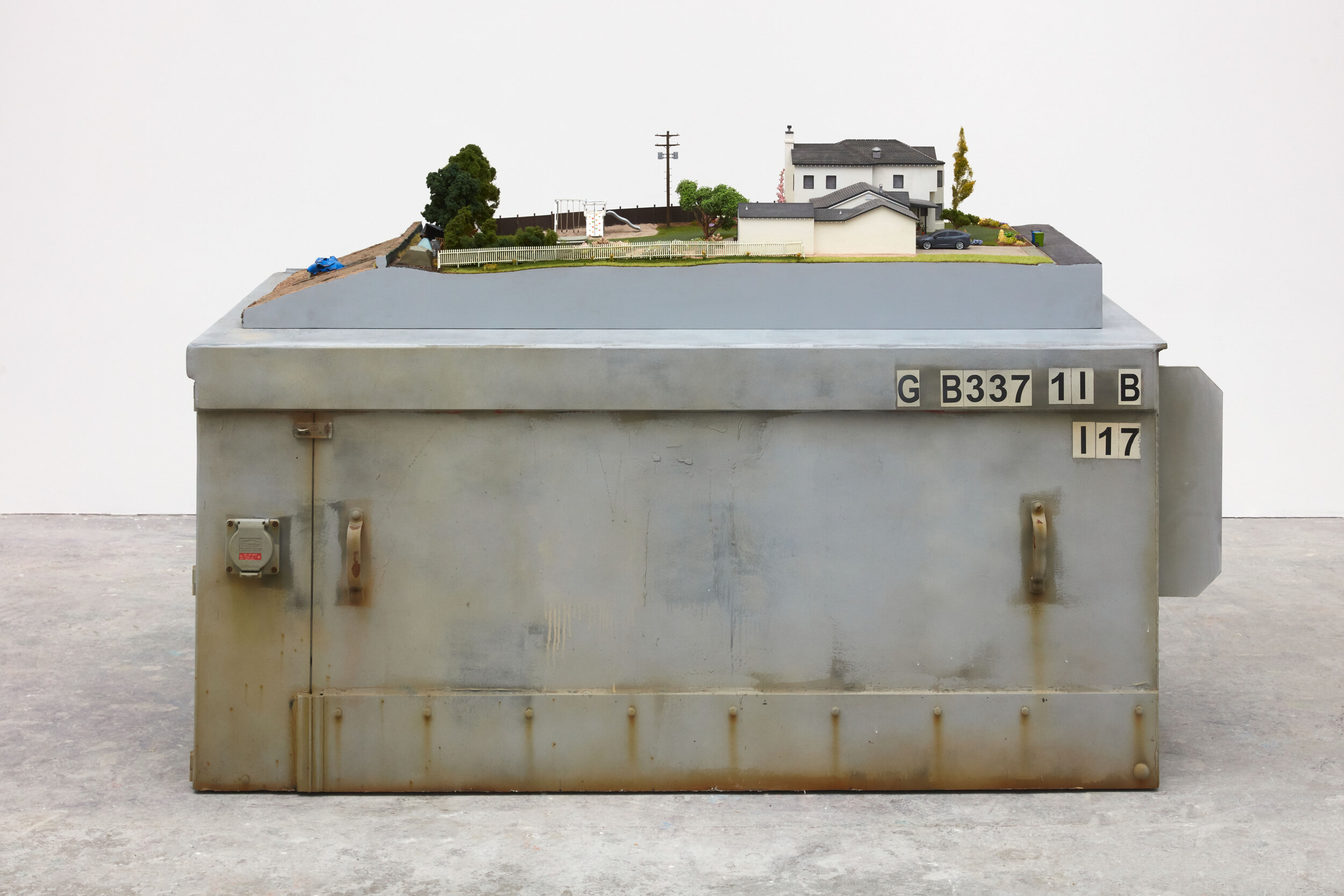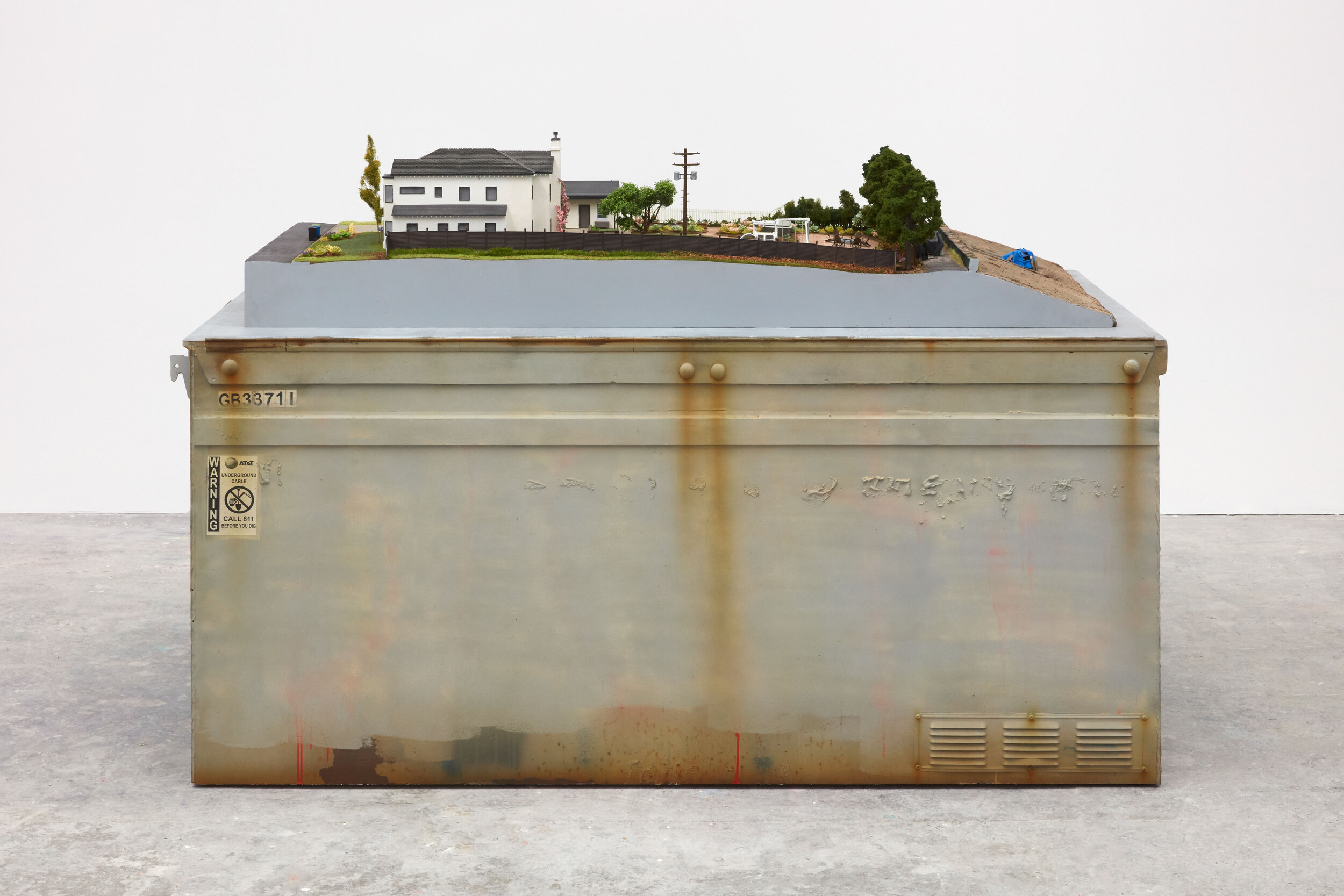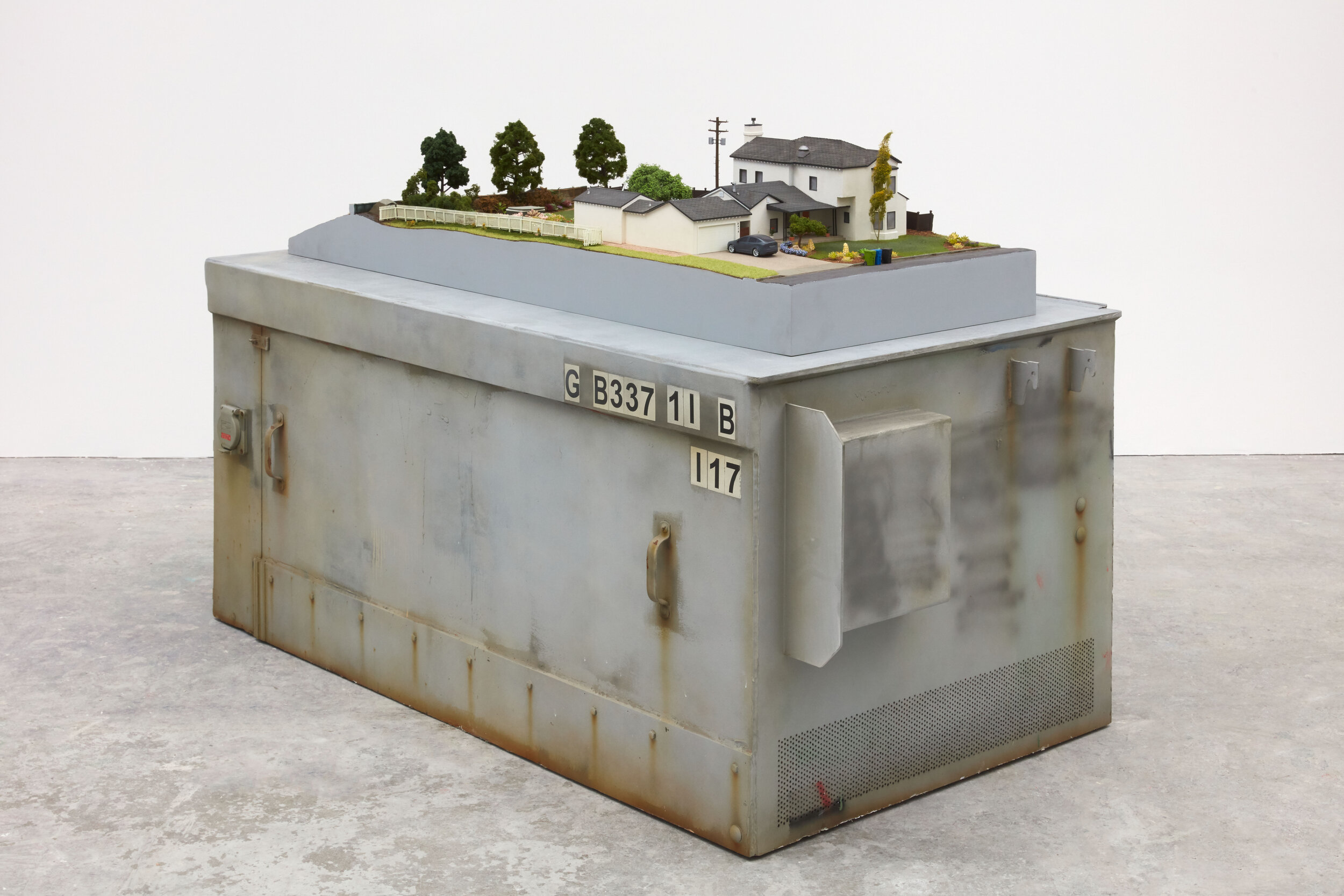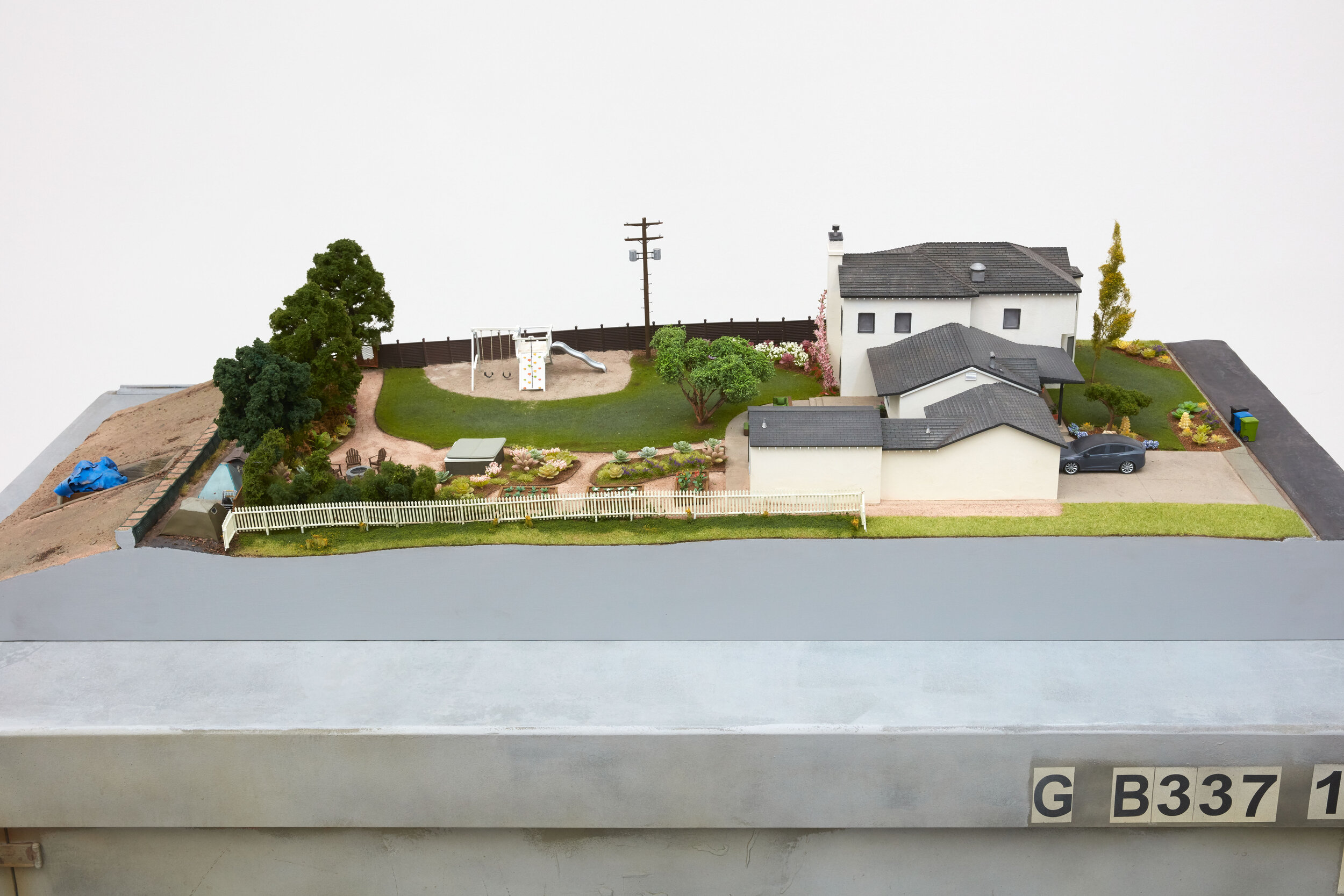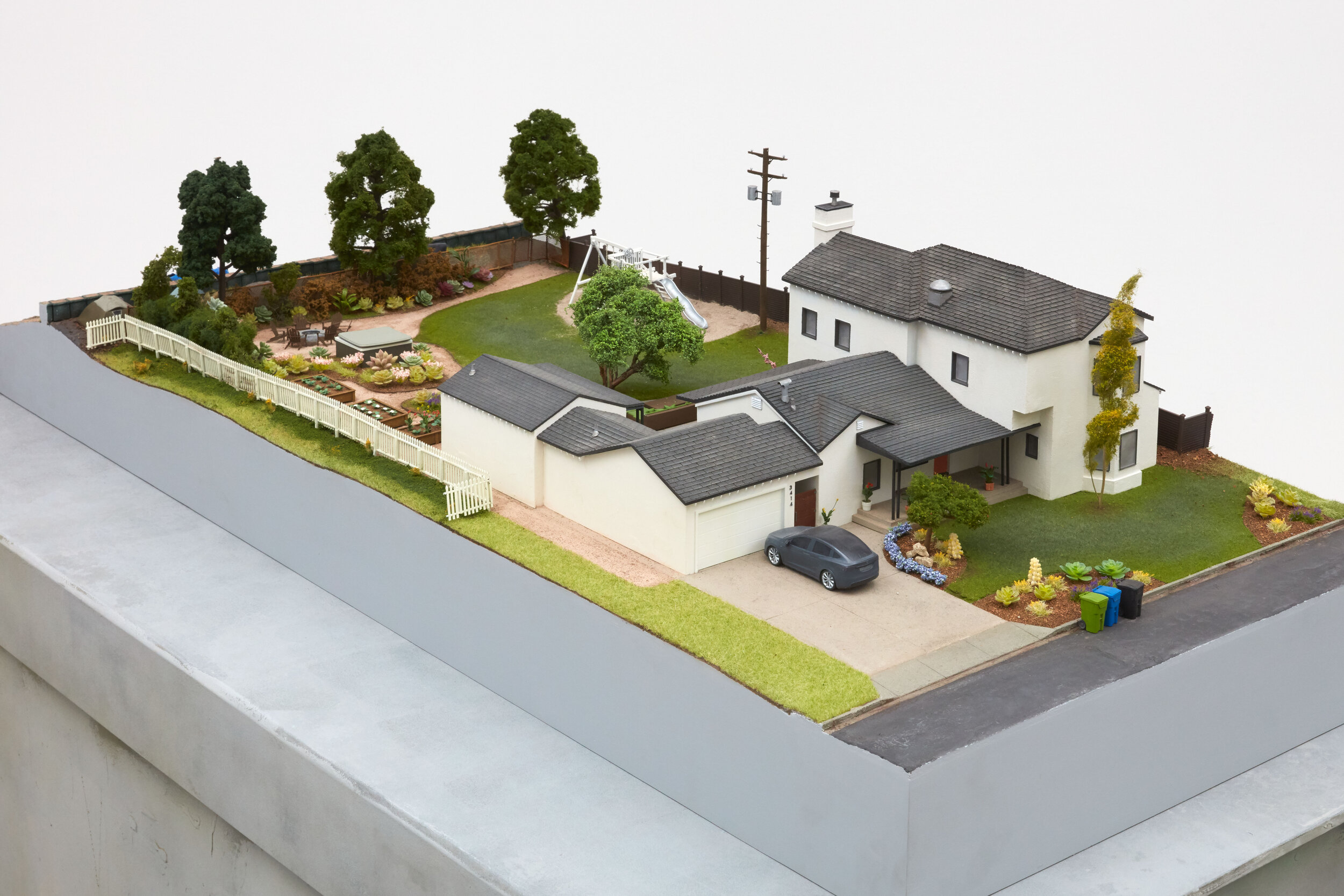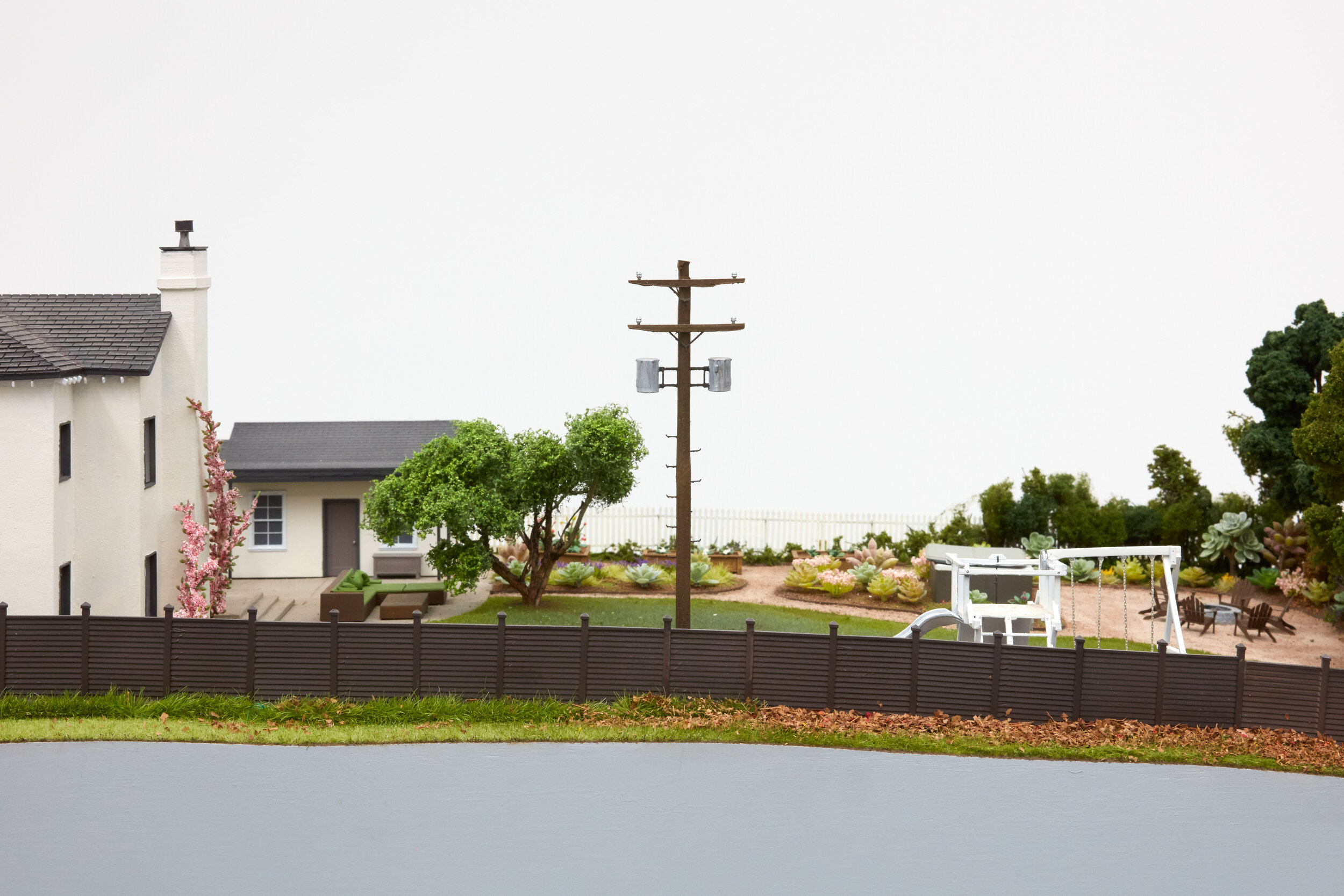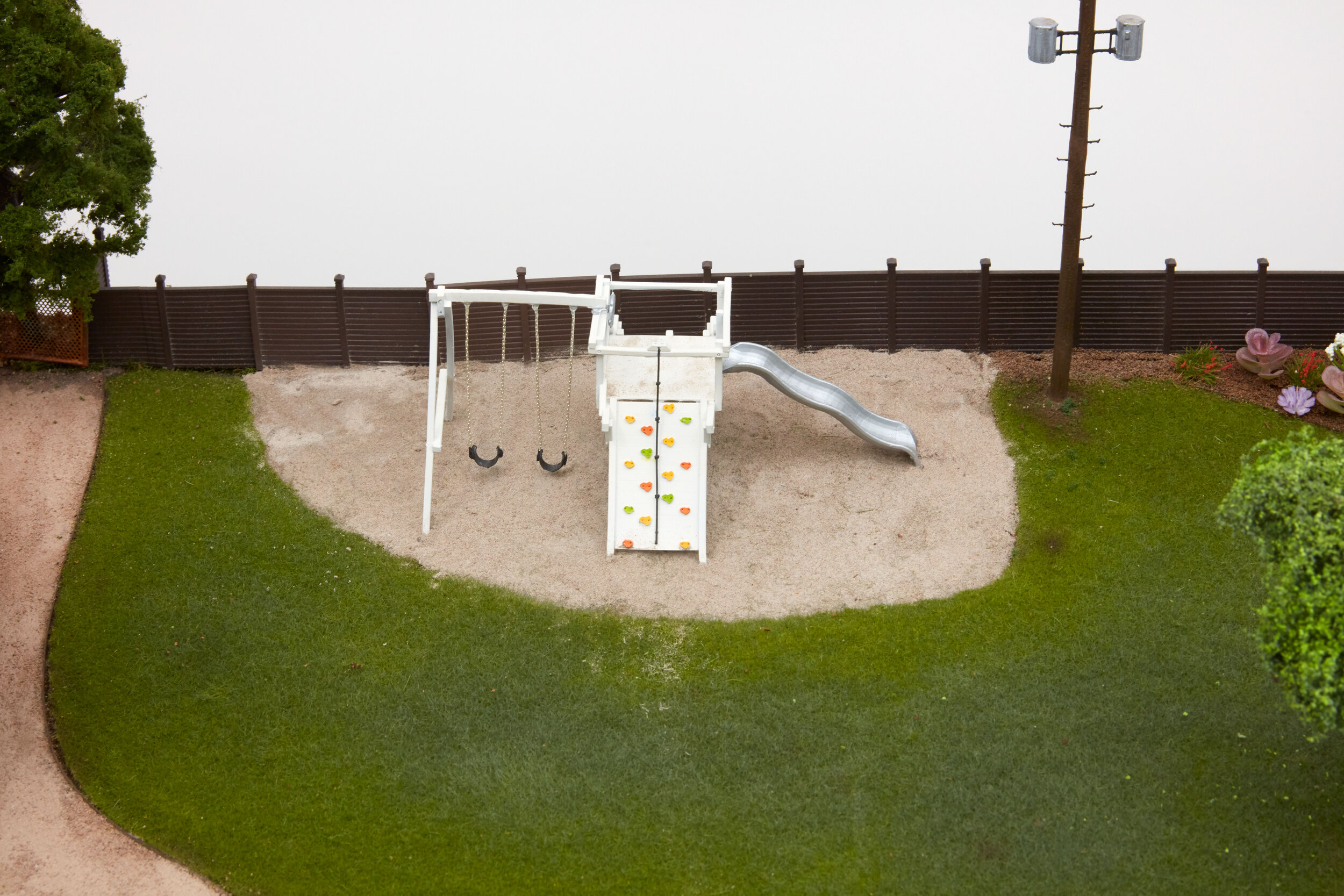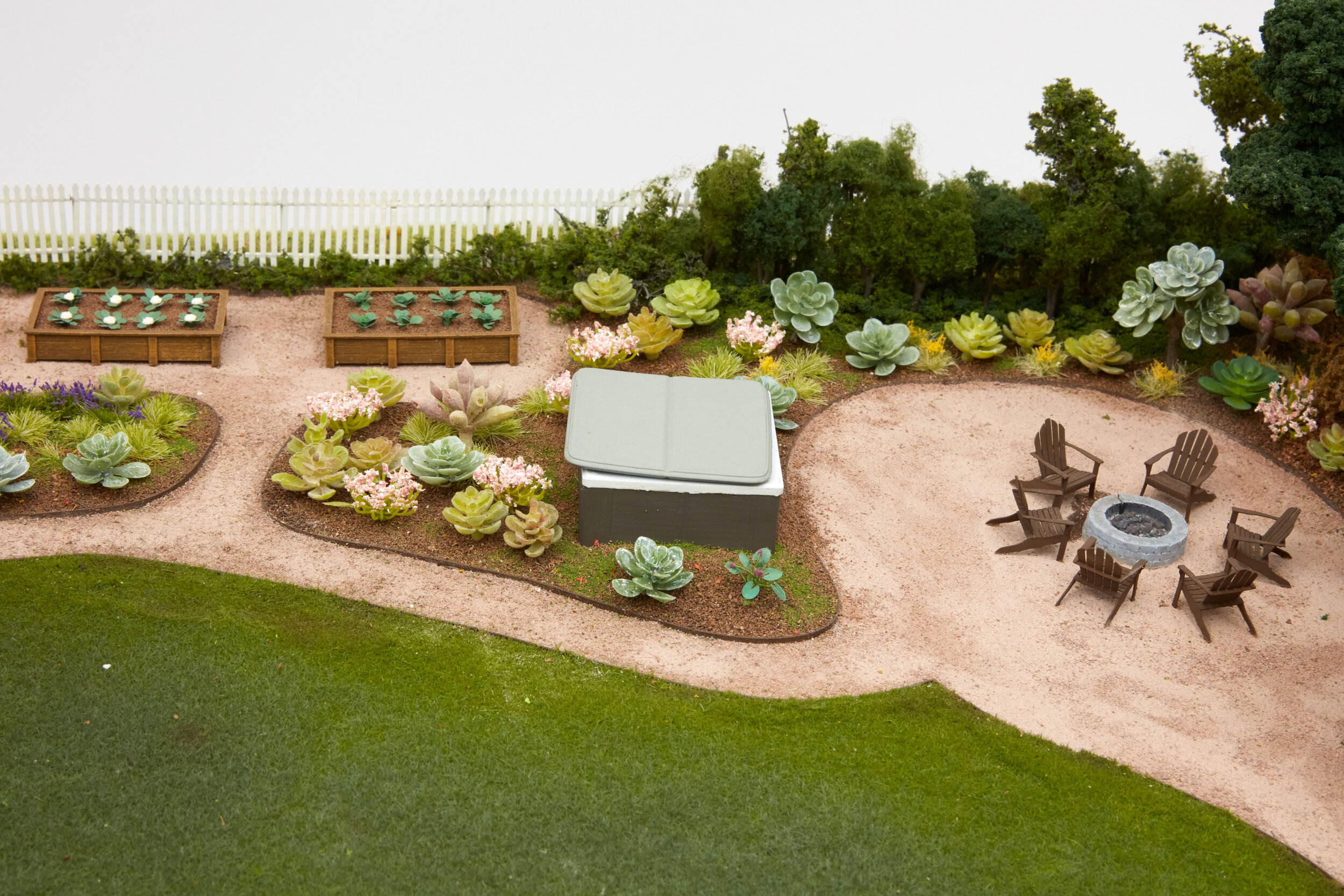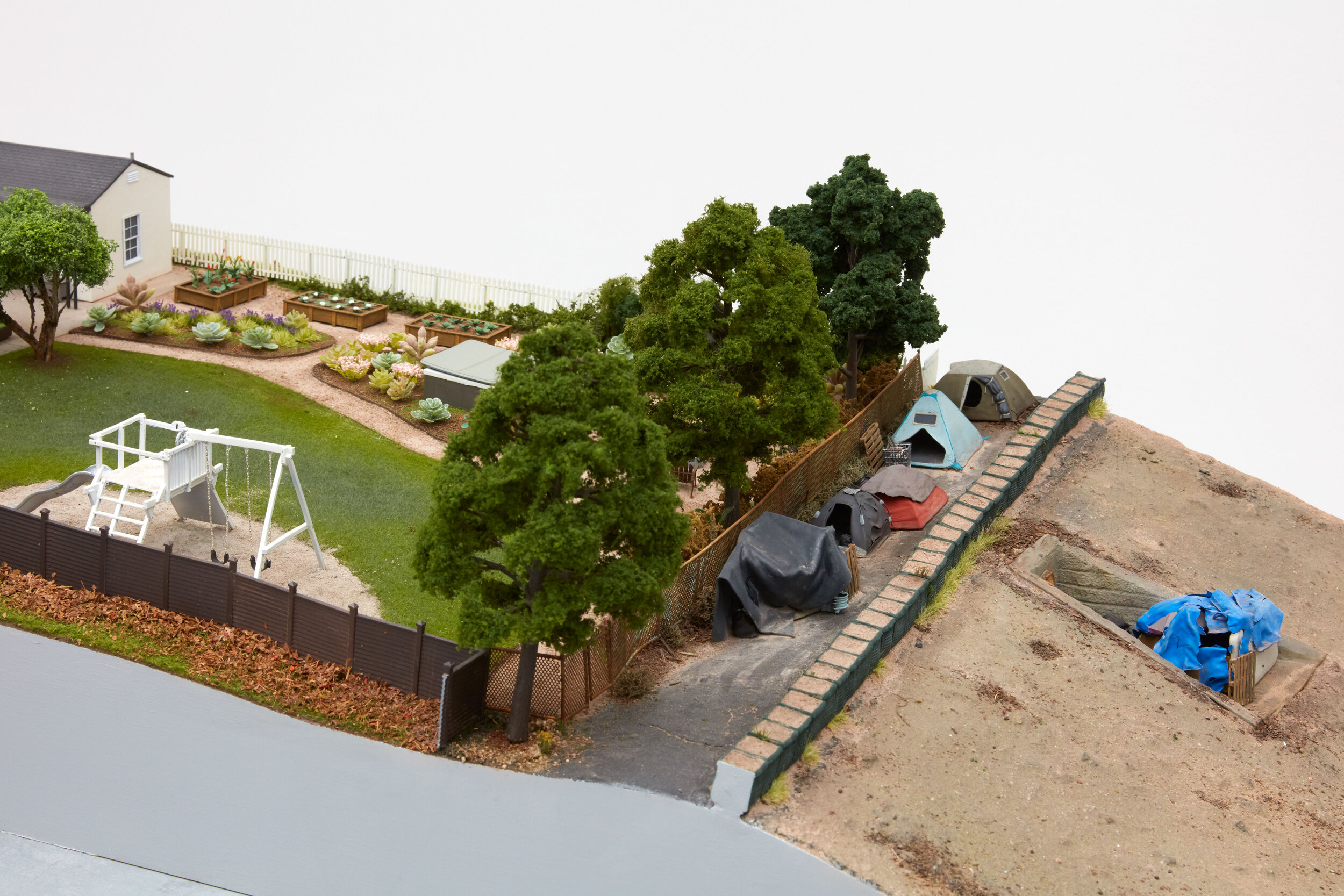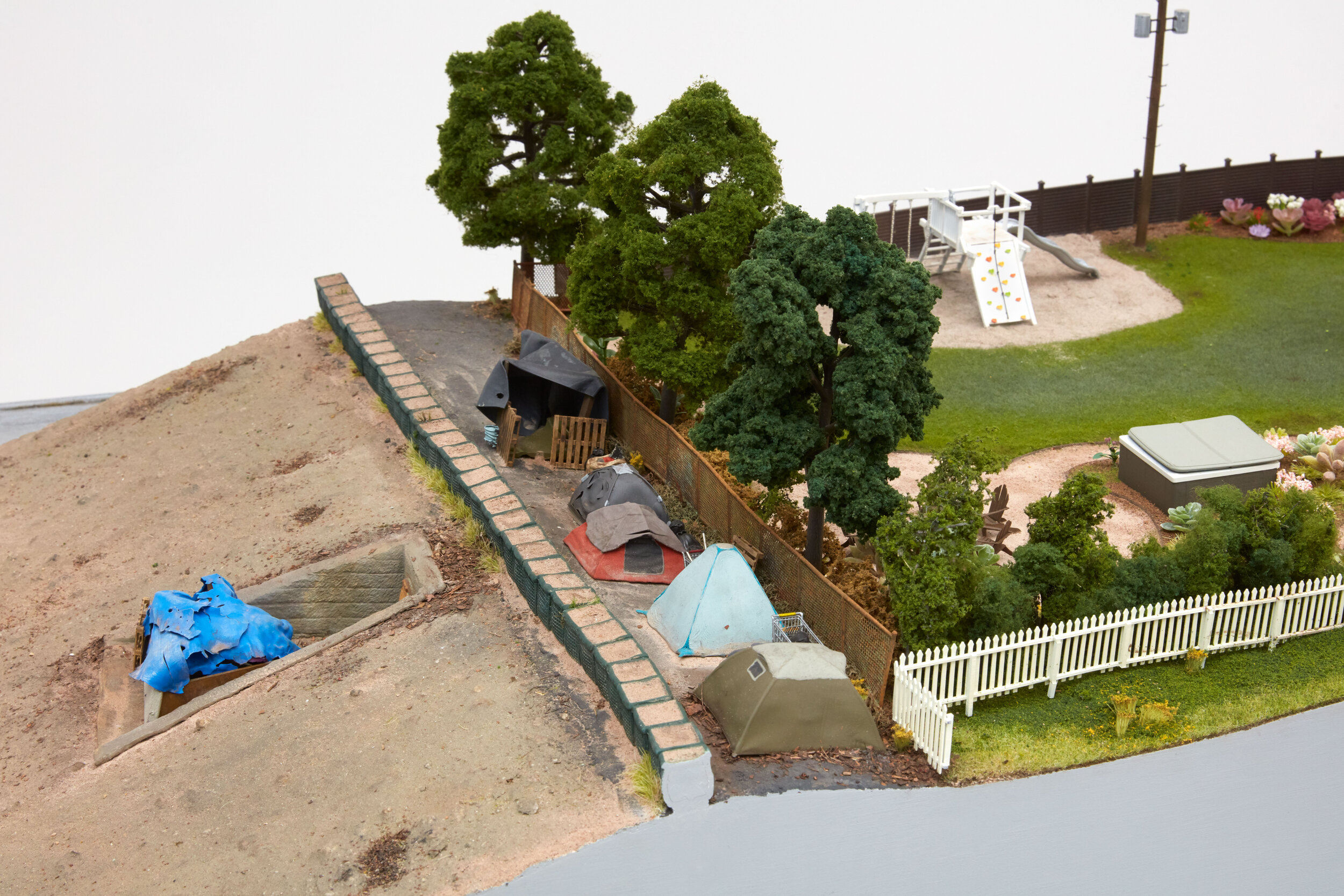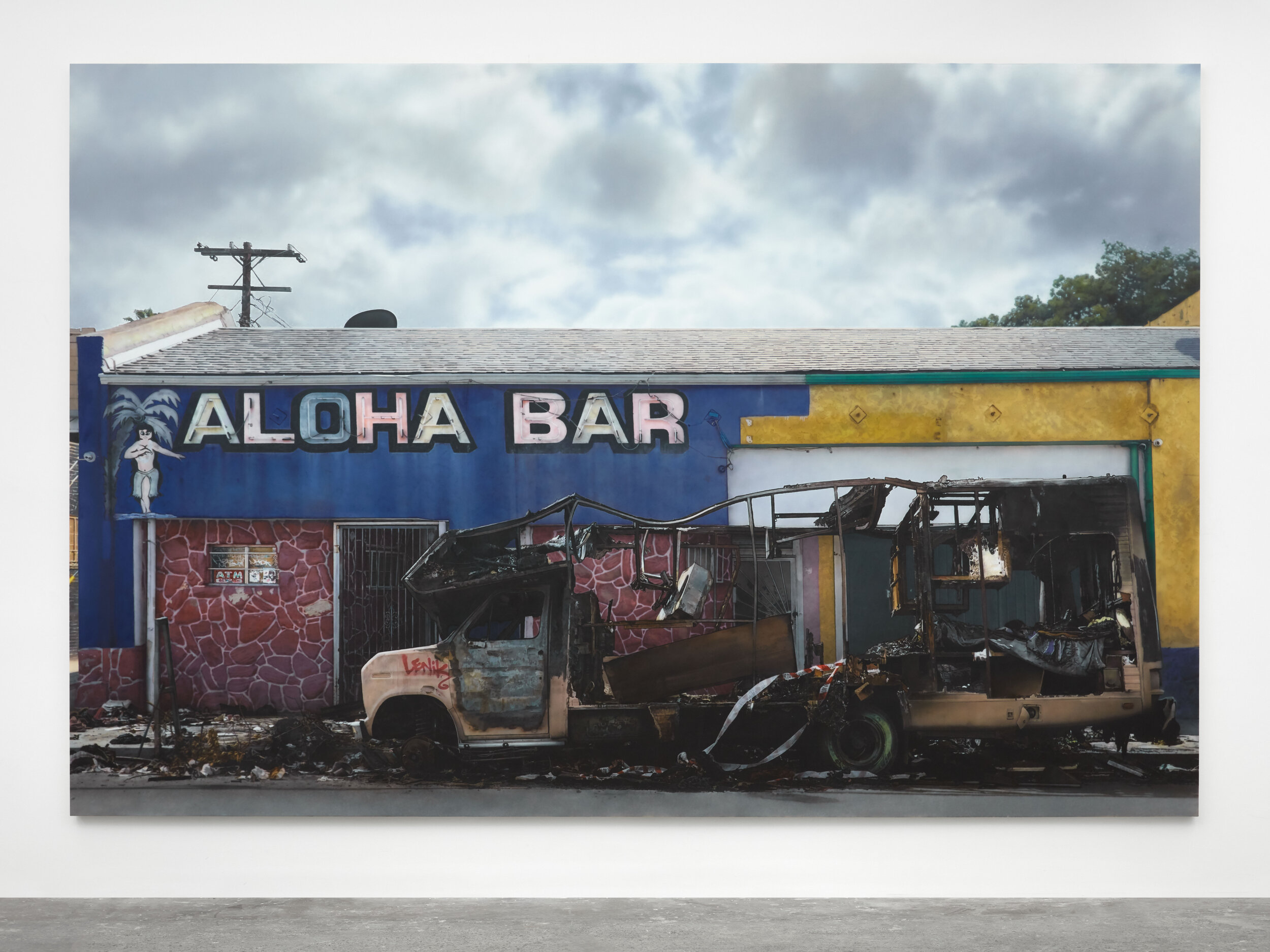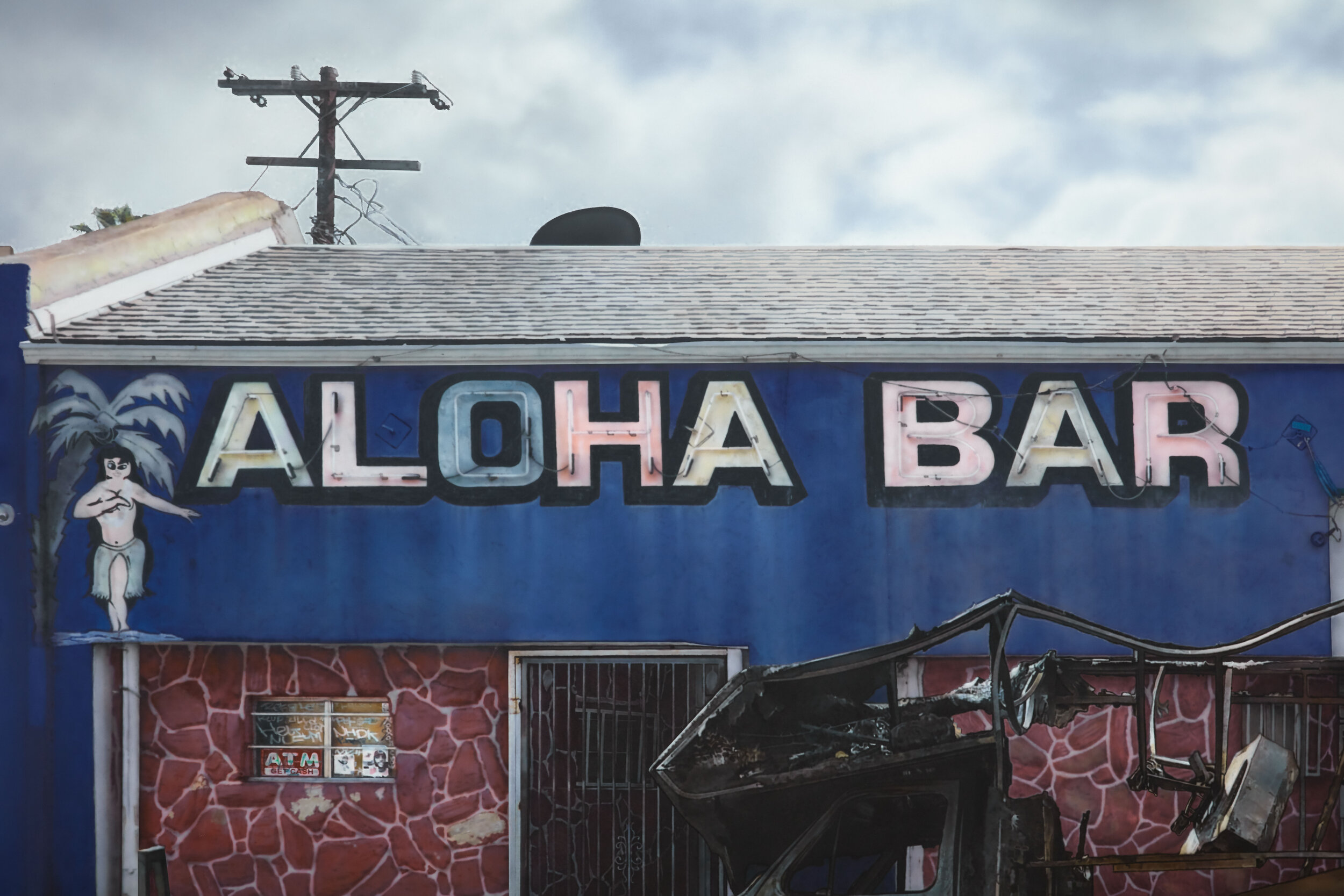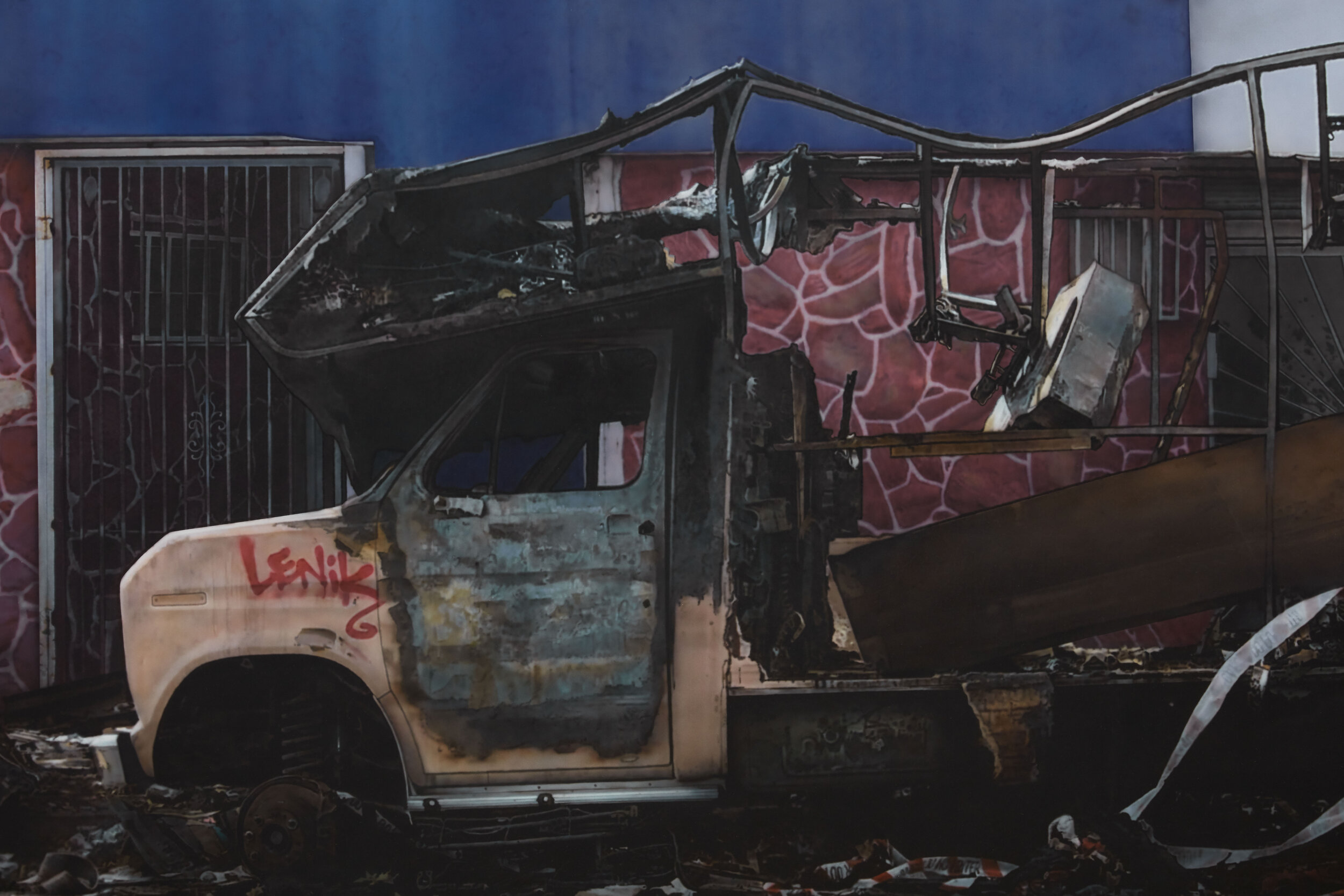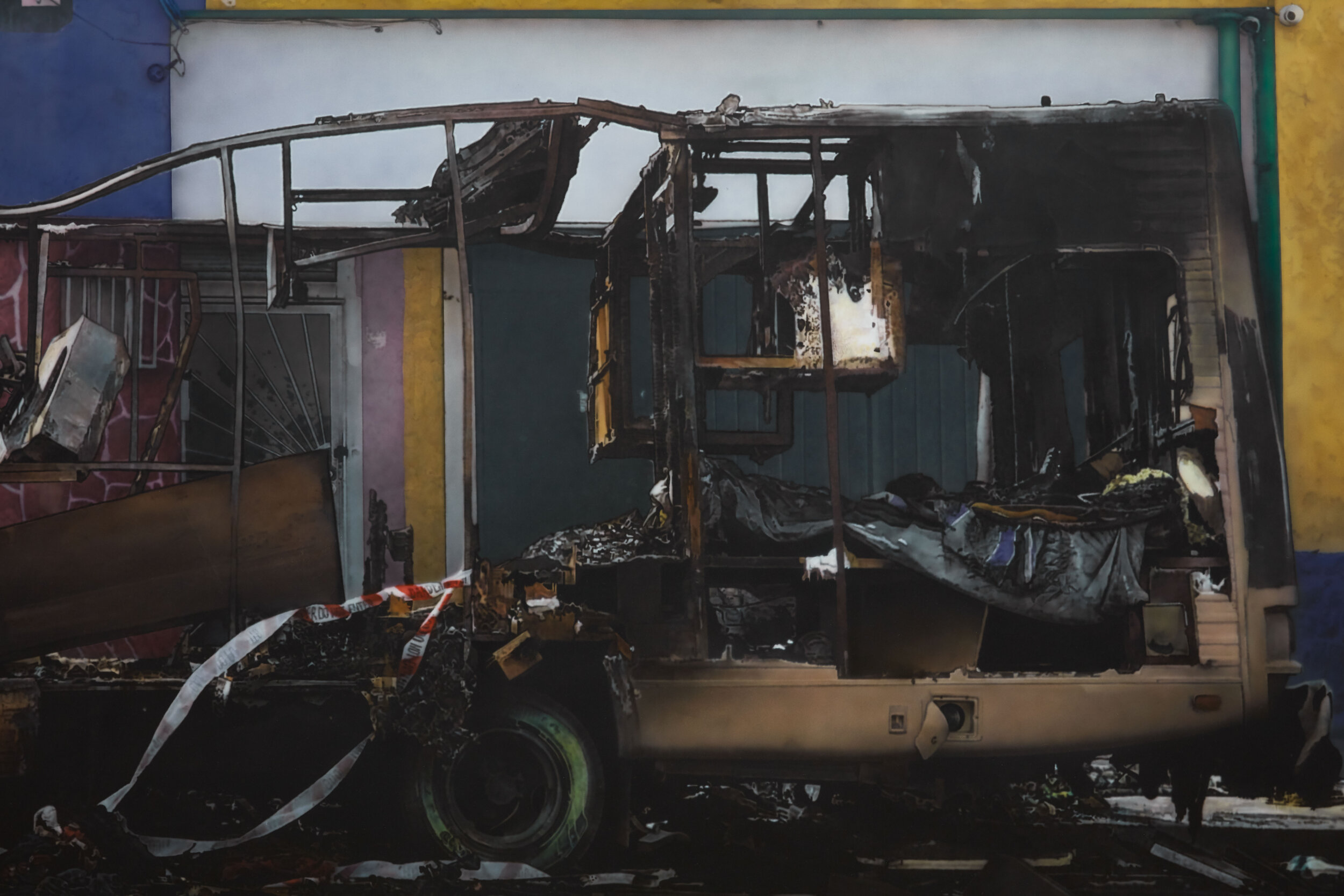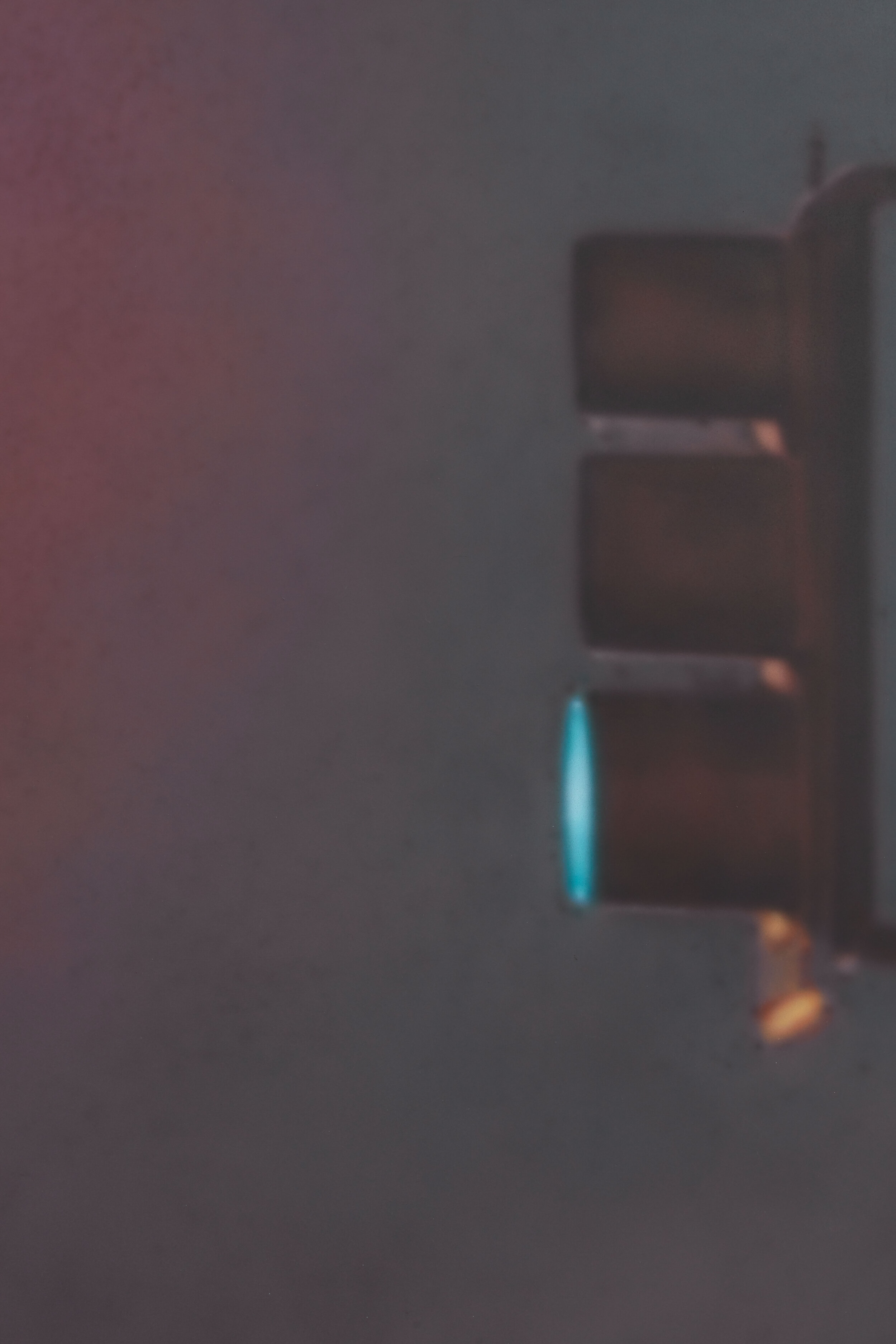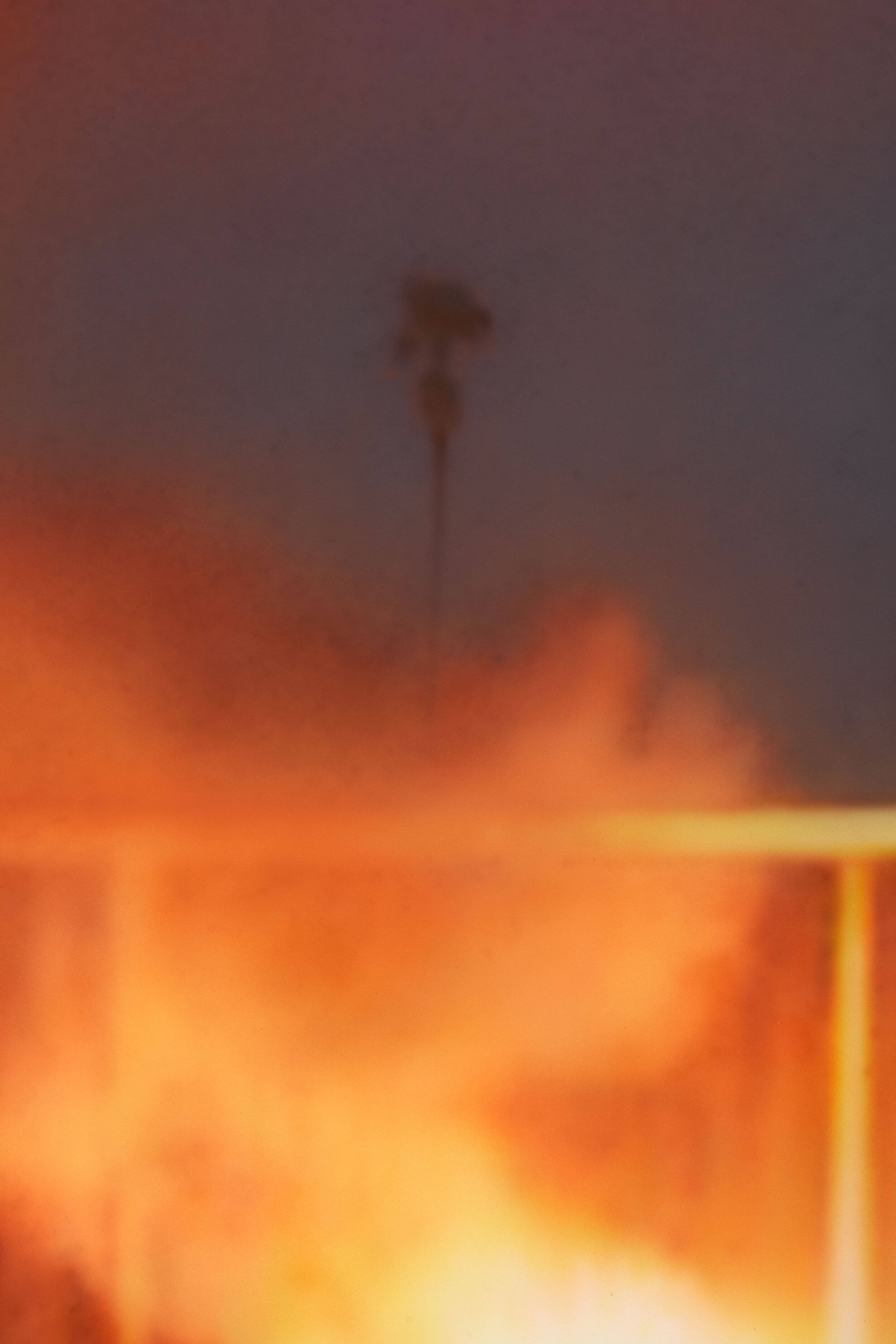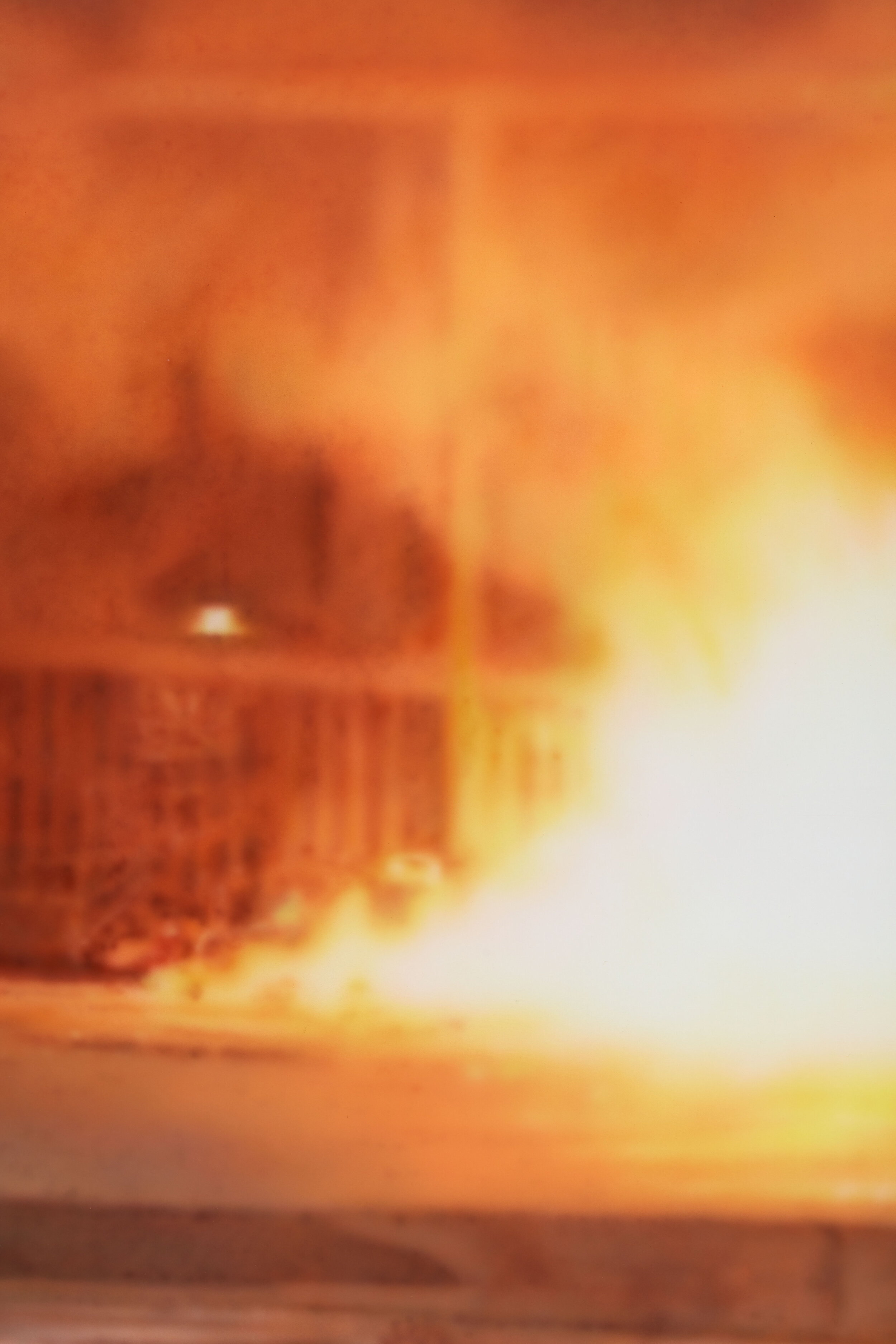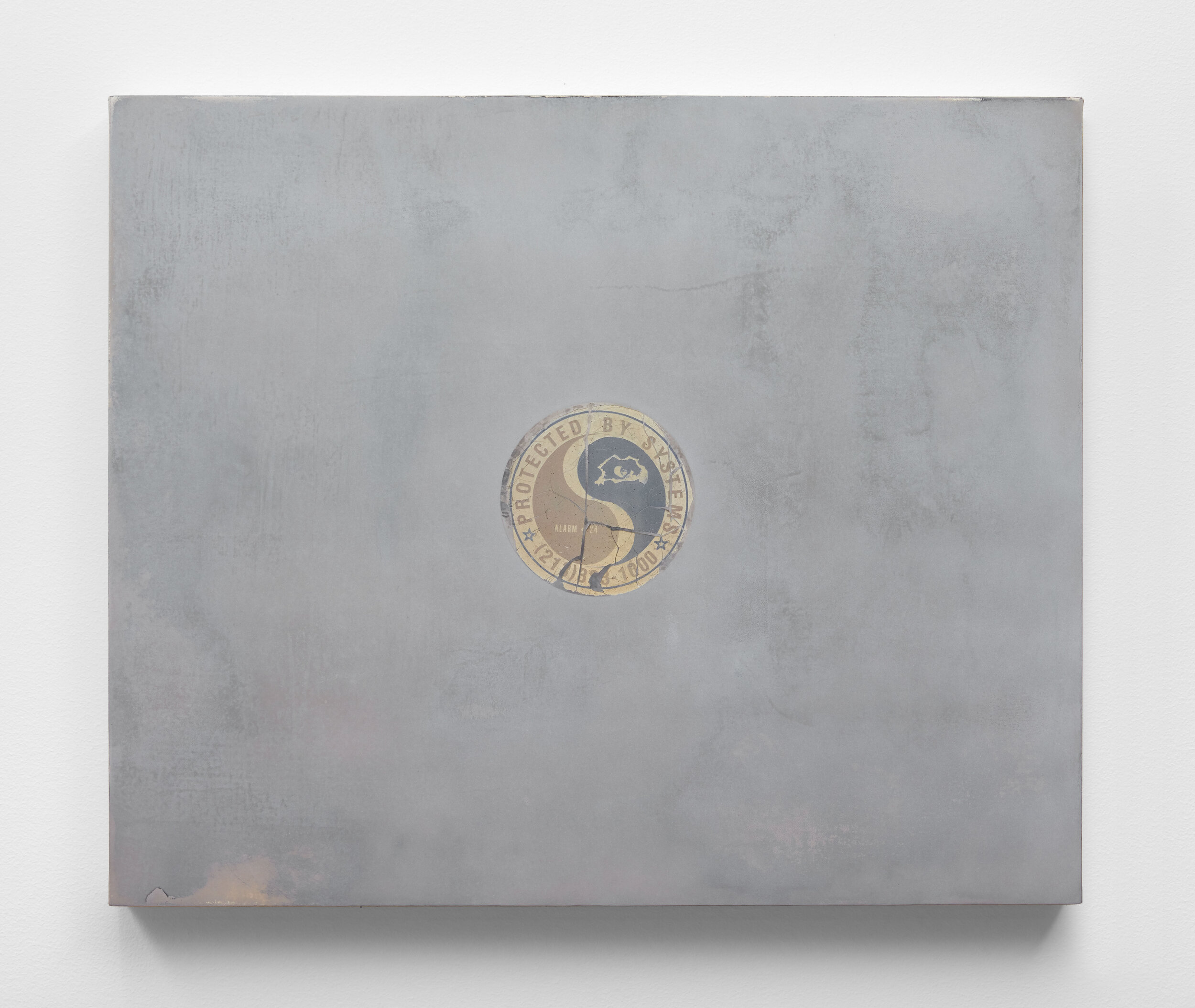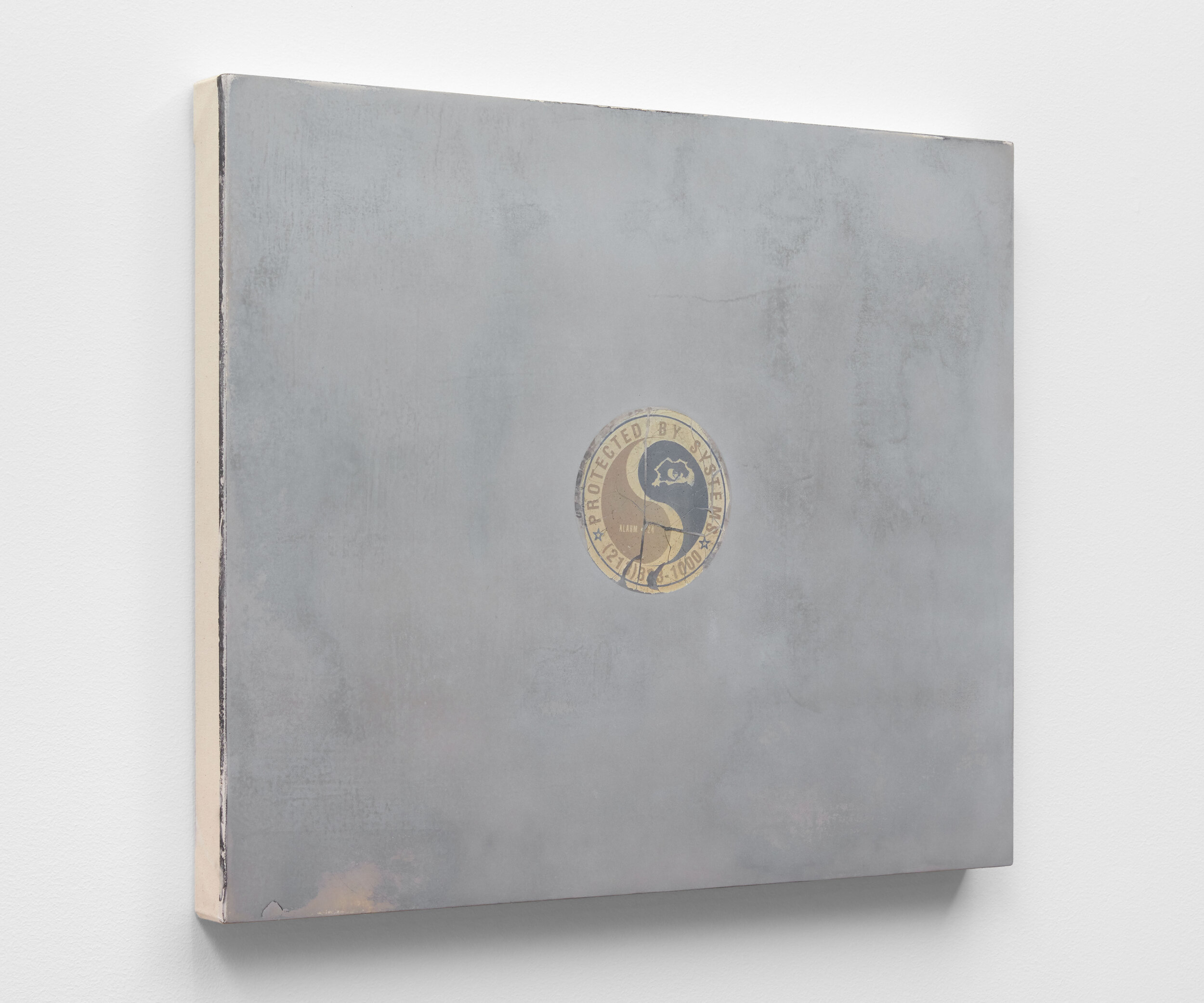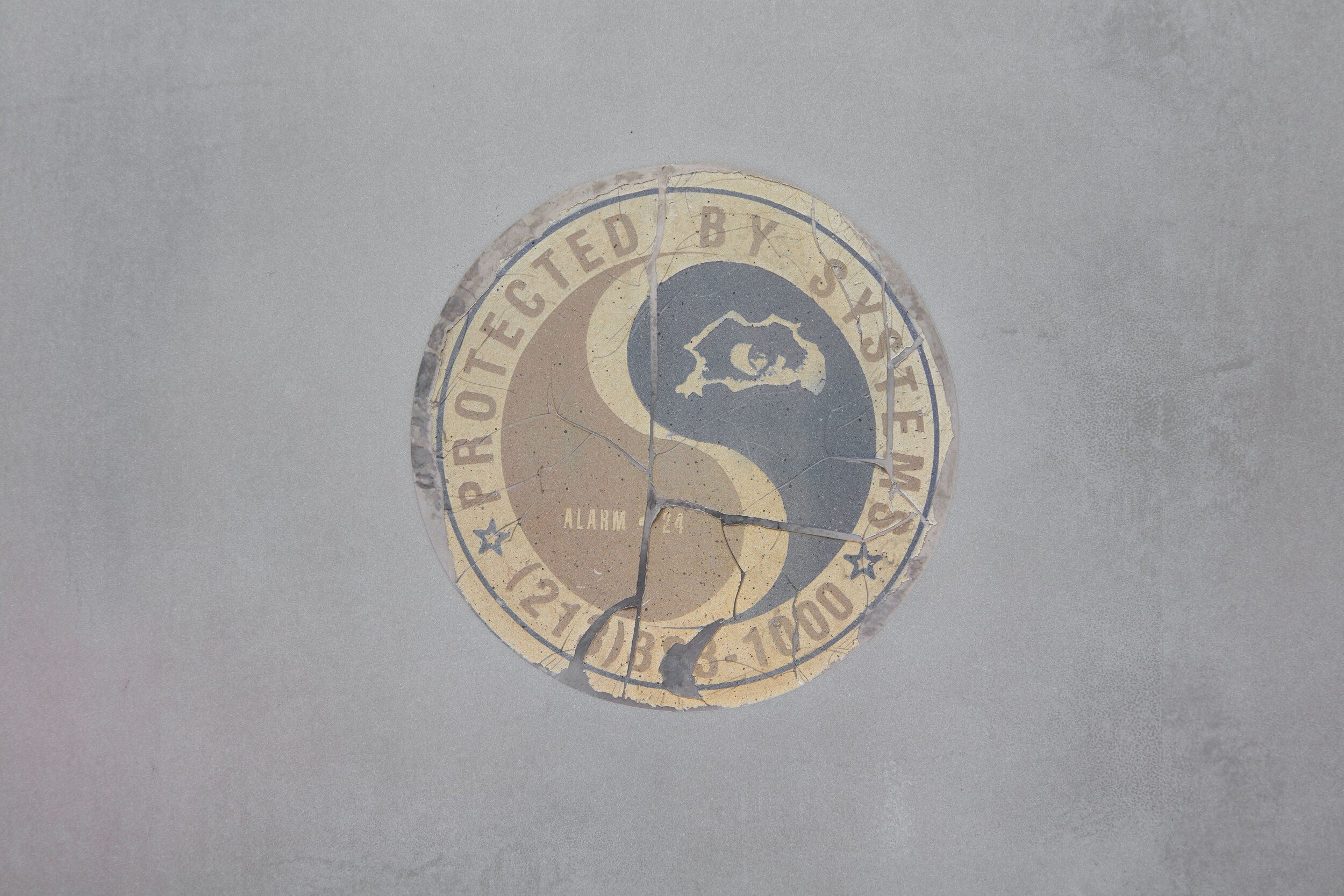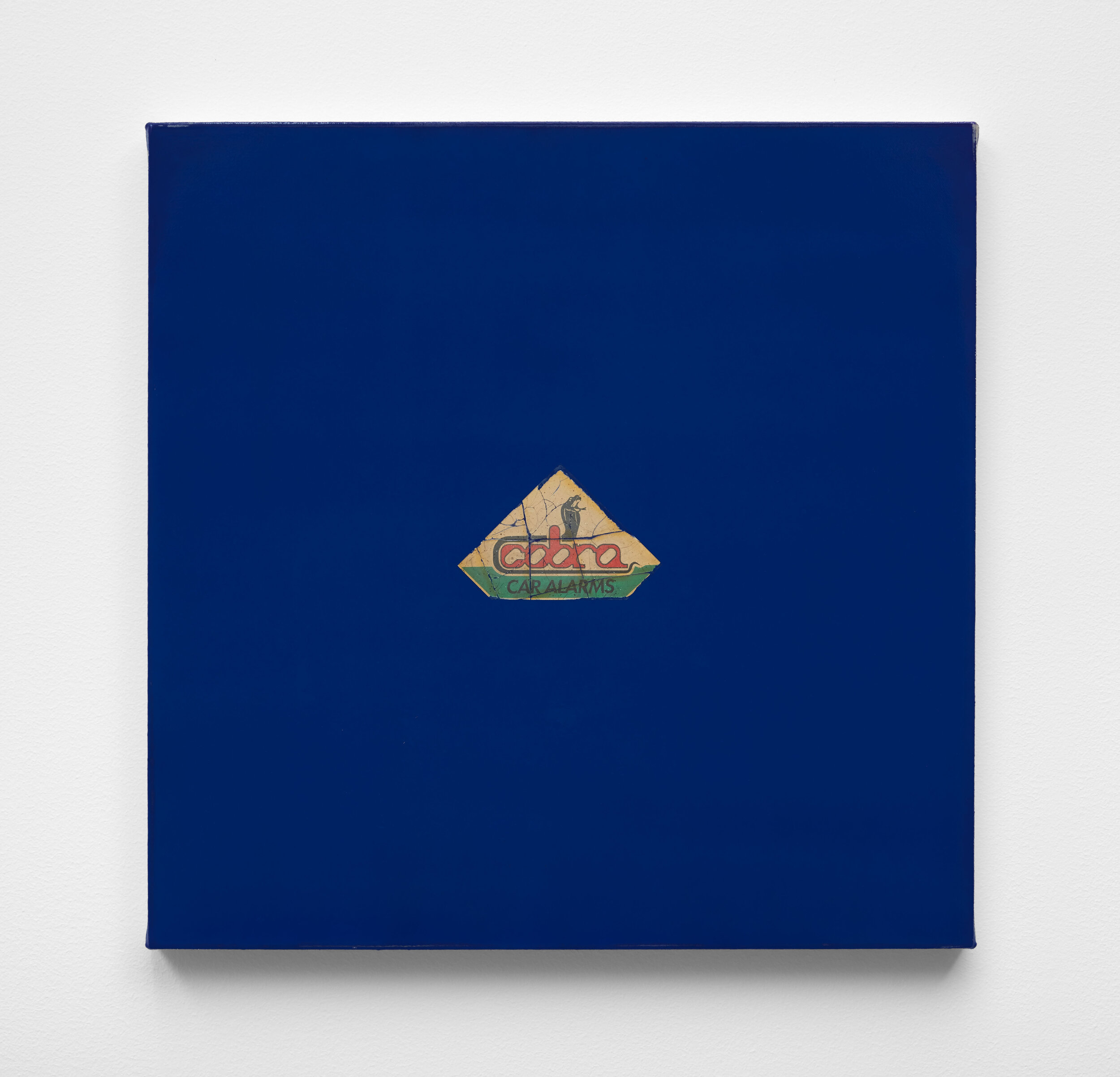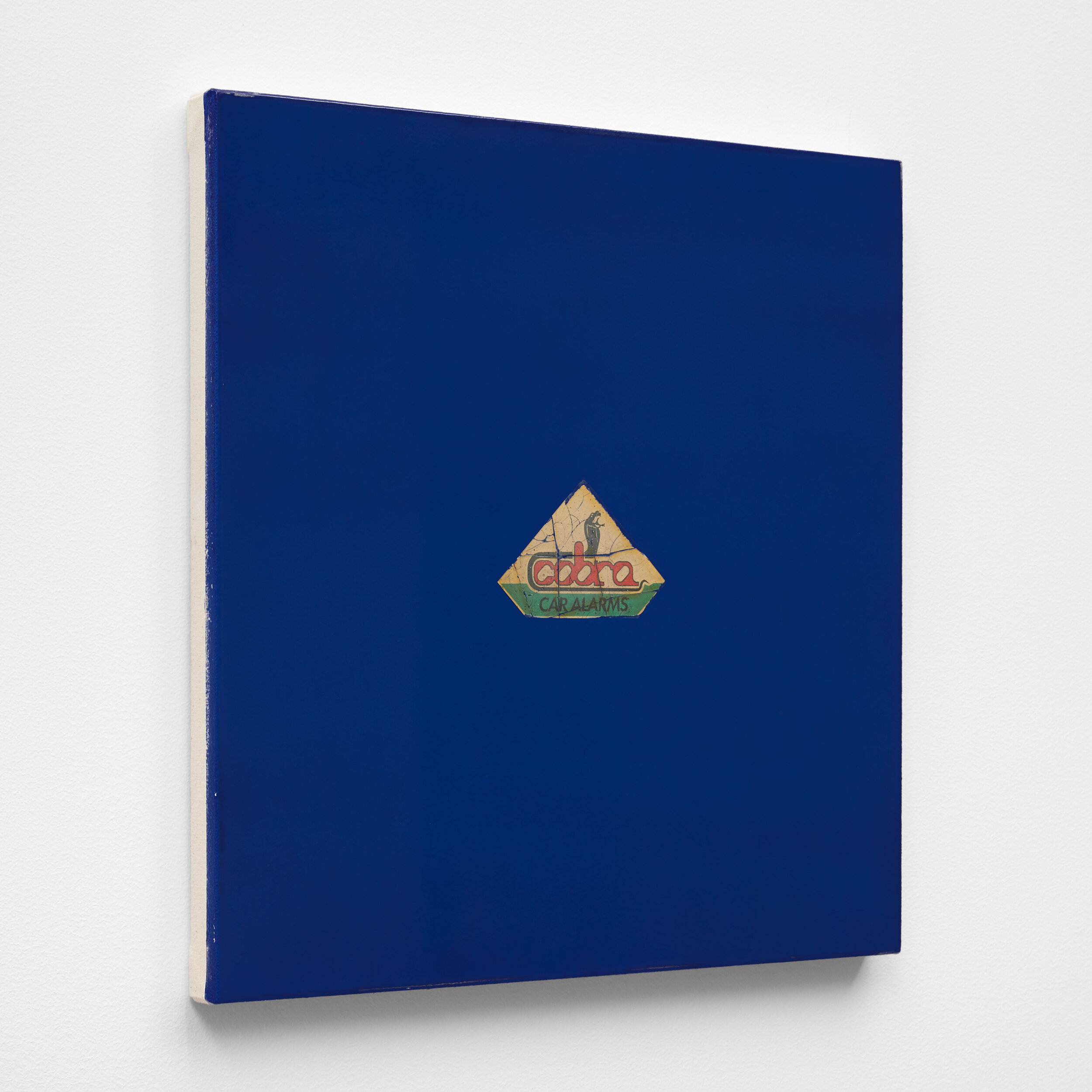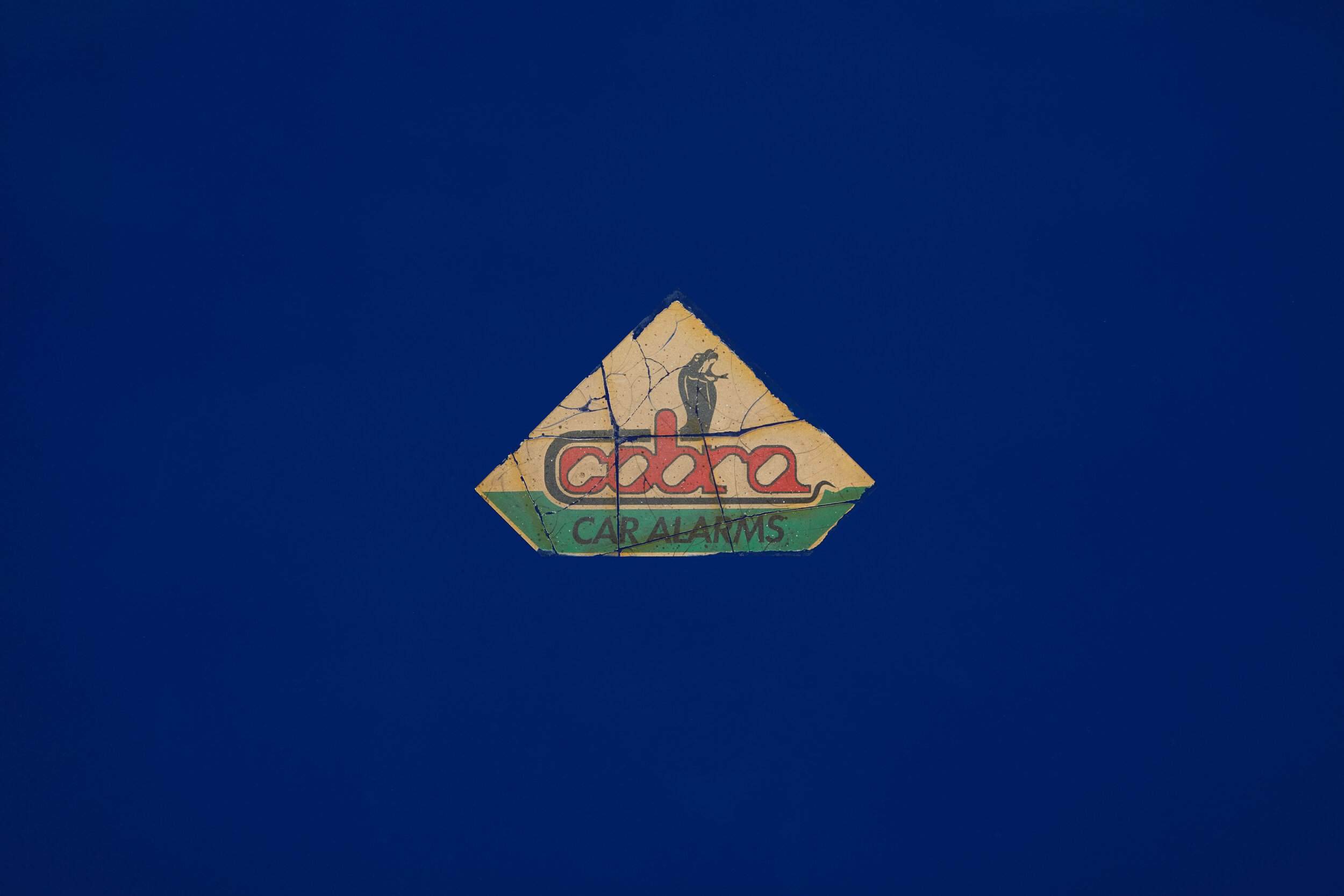Apocalypse Porn, François Ghebaly, NY, 2021
September 10 - October 16, 2021
Installation Views
Individual Work
Press Release
François Ghebaly is proud to present Sayre Gomez’s Apocalypse Porn, the artist’s fourth exhibition with the gallery and the first solo exhibition at the gallery’s New York space.
Over the past decade, Sayre Gomez has honed a unique perspective on the state of contemporary visuality, taking Los Angeles as his central subject and case study. Deploying hyperreal painting techniques across canvas and sculpture, Gomez interweaves the gritty urban space of Los Angeles with the hyperbolic simulacrum of Hollywood. The results traverse the overlapping territories of truth and fiction, spectacle and banality, paint and pixel.
Apocalypse Porn presents a focused view of new work, pivoting around a major new painting, Aloha. Under an overcast sky radiating cold light, the blackened carcass of a burnt-out RV camper stands superimposed against the entrance of a dilapidated tiki bar. Charred remnants of inner cabinetry and bedding lie within the exposed structure. A red and white strip of caution tape evokes a tattered American flag. With Aloha we witness a ruin, an aftermath—mobility burned to the ground. Yet the event itself finds a kind of displacement in the nearby painting Entertainment Tonight, a towering painting centered on the incendiary light of a roadside blaze. Gomez mimics and accentuates the digital grain of this image’s referent: not the fire itself but a digital image of the inferno.
Gomez’s paintings are often this way—layered amalgams of visual materials. Found images, cell phone photos, video clips and fragments that sum to a patchwork vision of the urban terrain. These elements are composed together digitally and then meticulously committed to canvas using a broad array of painting processes, including complex stenciling, airbrushing, Hollywood set painting techniques, and newly devised means of representing rust, grit, and flame. Art historical references collide with graffiti and street culture, motorcycle painting and Photoshop, ultimately underscoring Gomez’s central consideration of how images circulate, gather meaning, and become culturally legible, mutating all along the way.
The exhibition also introduces a new vocabulary into Gomez’s repertoire: the miniature. Sitting in the exhibition space is an intricate scale model of an affluent Southern Californian household, appointed with a Tesla SUV in the driveway, a hot tub and raised vegetable gardens in the rear, and other furnishings of upper middle class suburbia. A rusted chain link fence runs the rear length of the property, and flanking it is an encampment of tarps and tents. Gomez presents a harsh juxtaposition of two extremes of American life, one that will be familiar to many Californians who have lived amongst the rising moral catastrophe that is the housing crisis in the state. The sculpture addresses a kind of hierarchy of visibility, which Gomez emphasizes by way of the model’s display structure: not a blank white pedestal but an actual scale electrical junction box, painted trompe l’oeil with cascading rust, covered-up graffiti, and paint peeling off the sides. The junction box comes to serve as an emblem of civic invisibility—what can be seen and what cannot?
Angelenos will immediately recognize in these canvases a reality of their city not often depicted in the popular imagery of the place. Yet beyond this, Gomez takes Los Angeles as a synecdoche for broader conditions in American society—stark and brutal inequality, widespread voyeuristic exposure, pervasive imaging technologies, and the disorienting collision of splendor and decline. In Apocalypse Porn as across his practice, Gomez puts the tools of hyperreality toward describing our truth, refocusing the apparatus of vision on the smoldering ruins just outside the frame.

